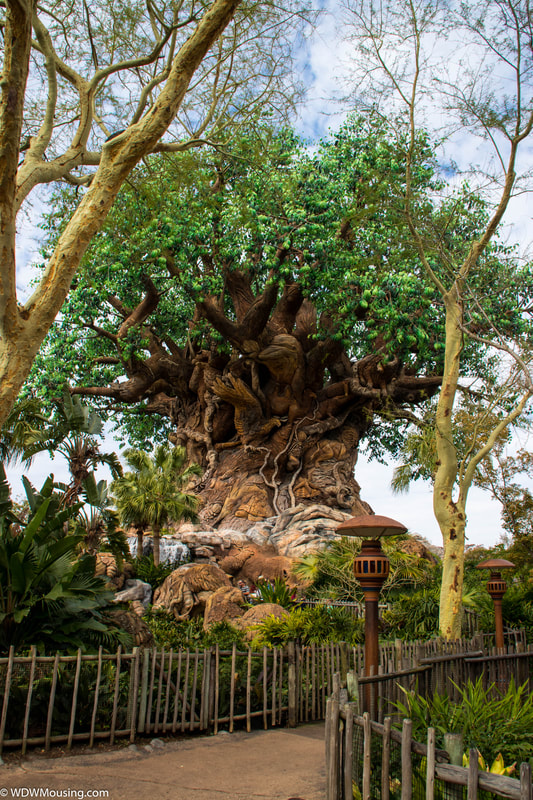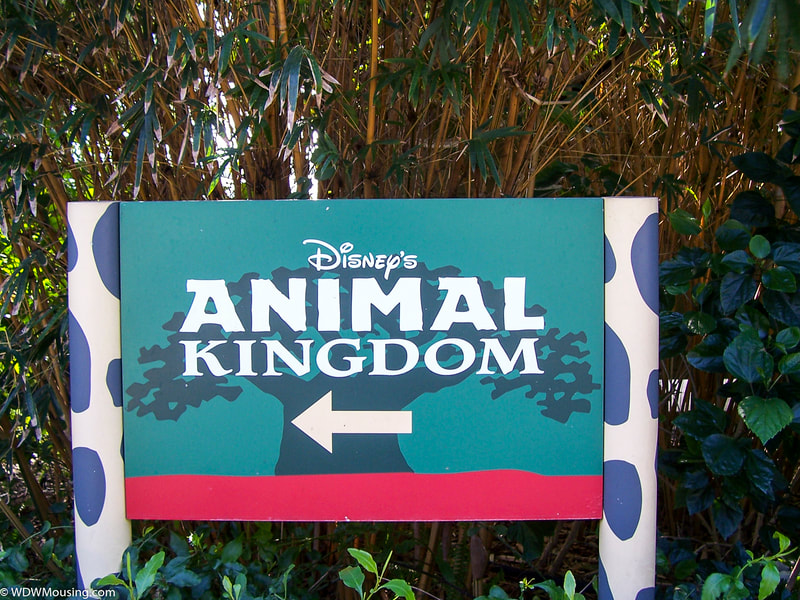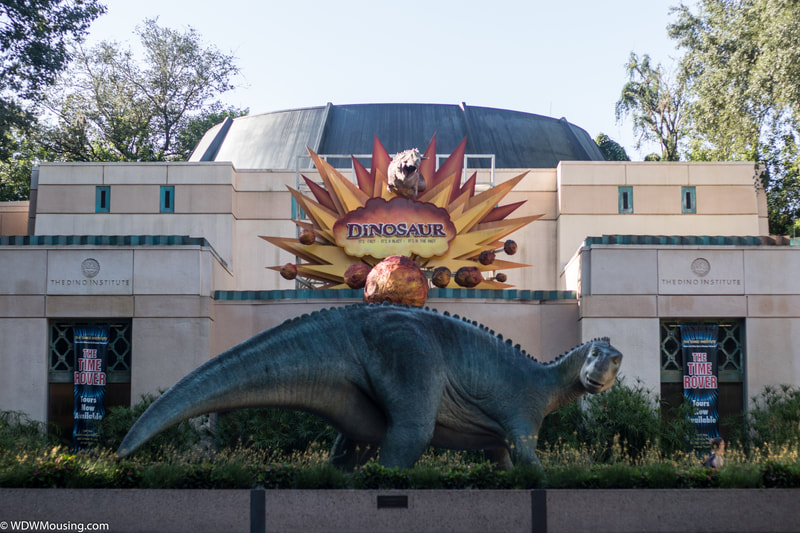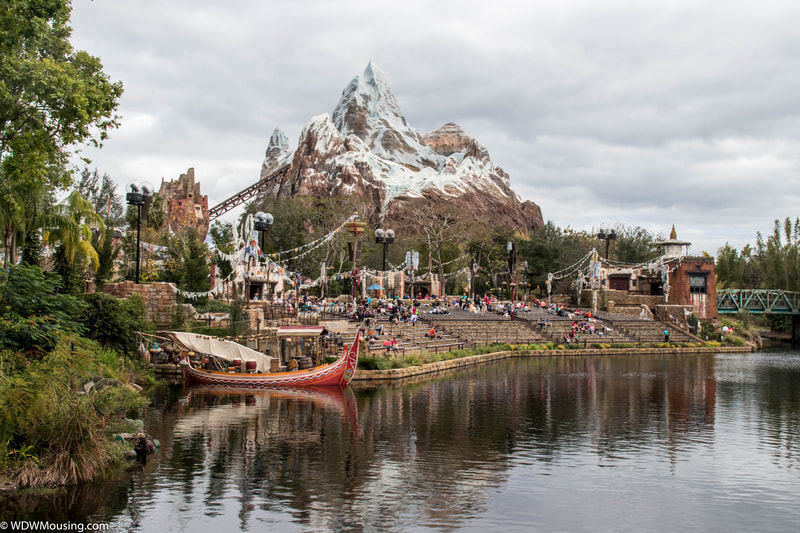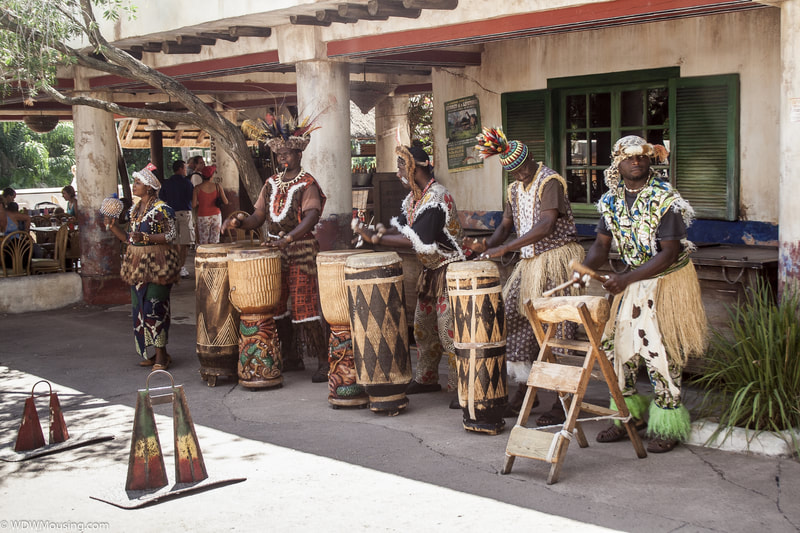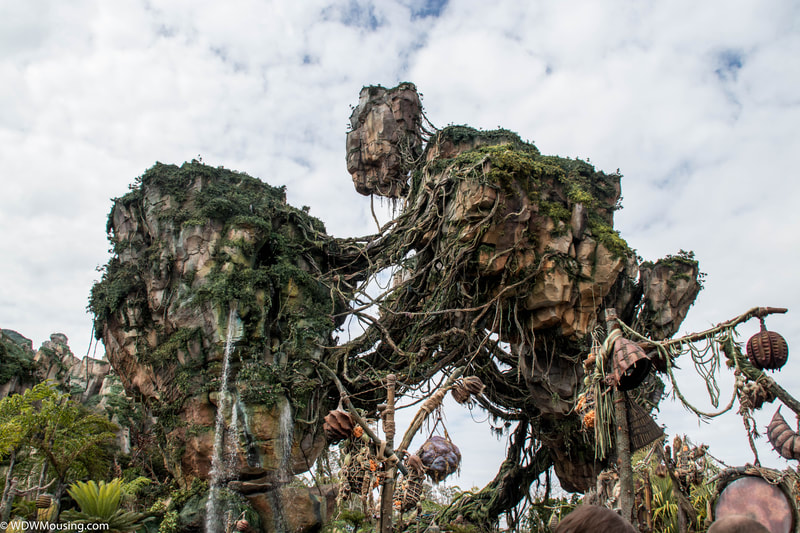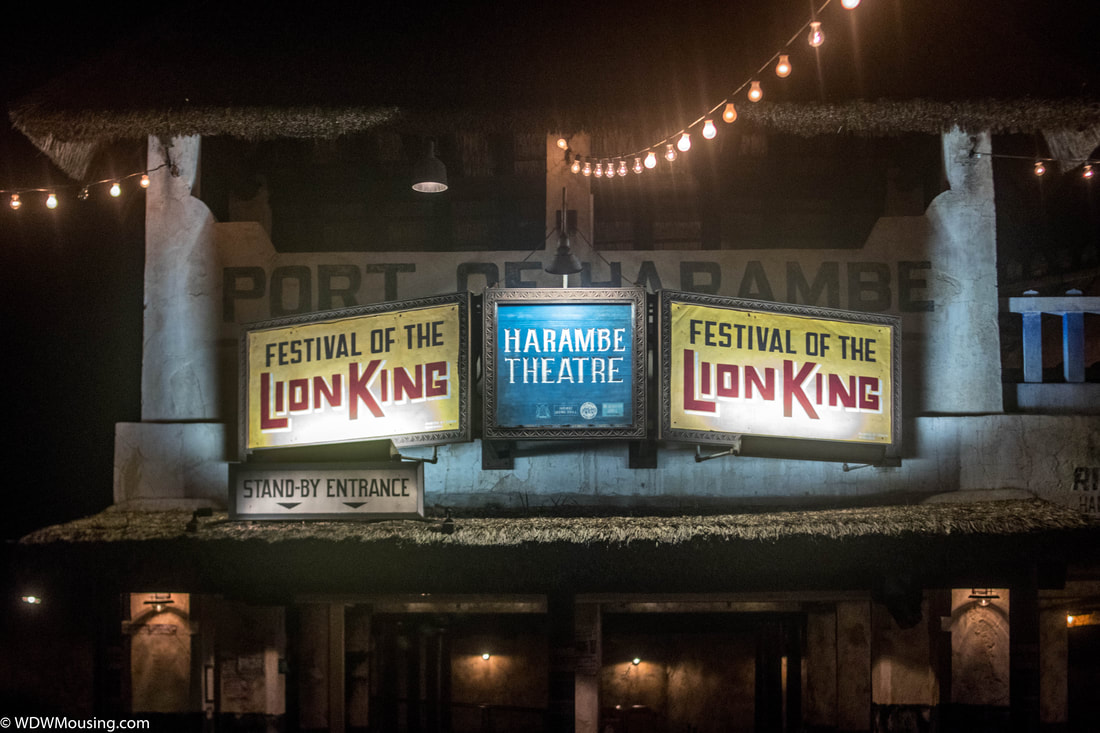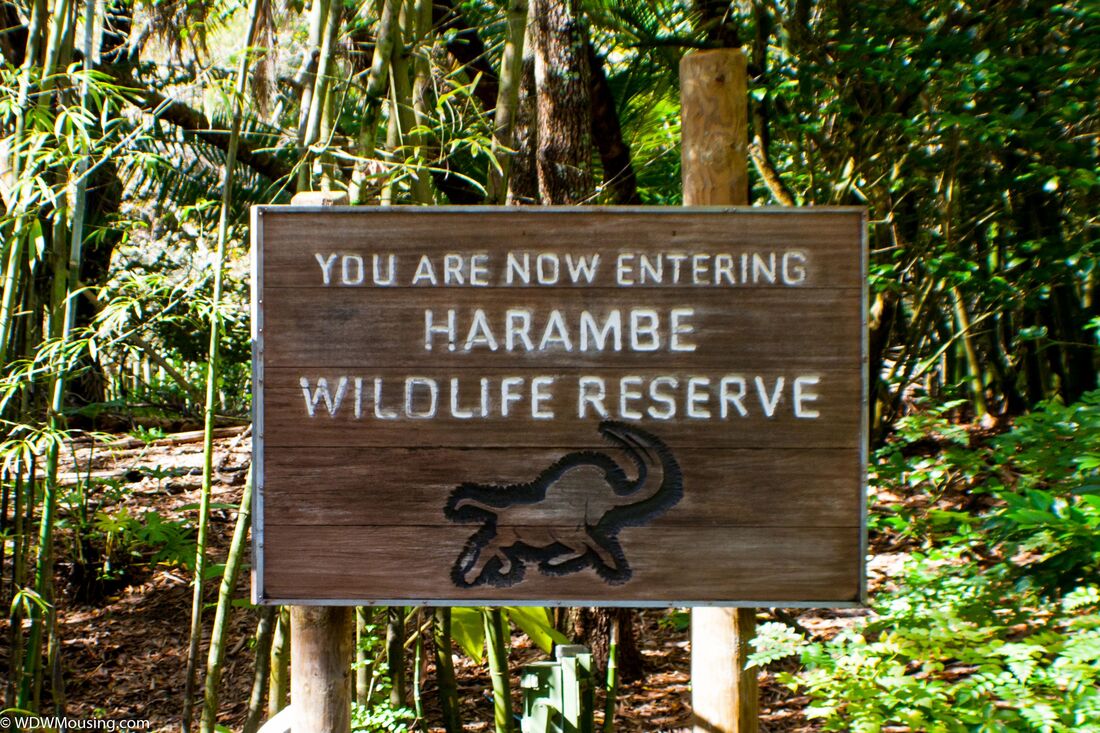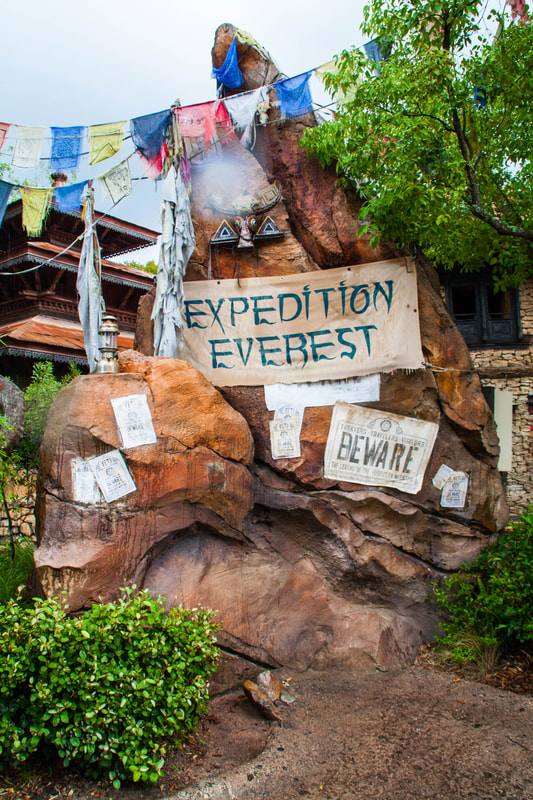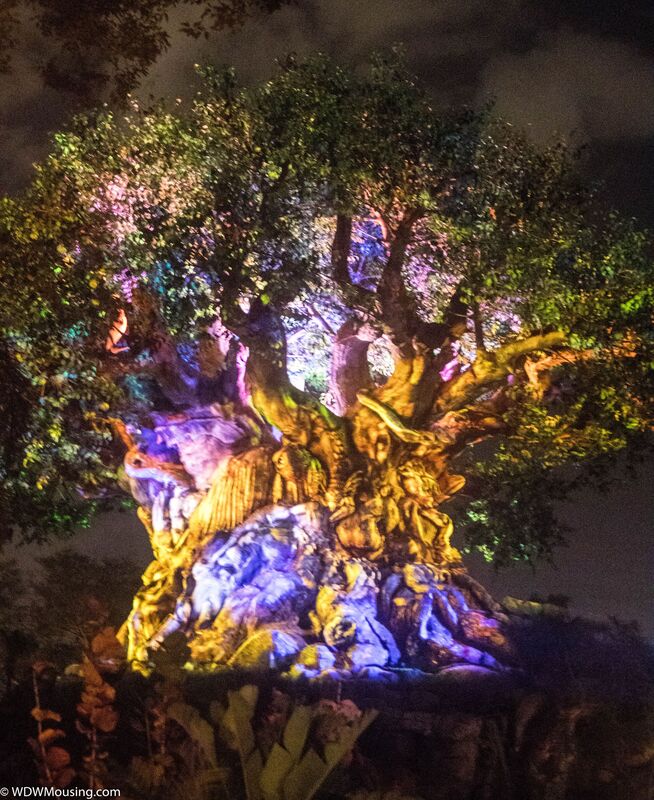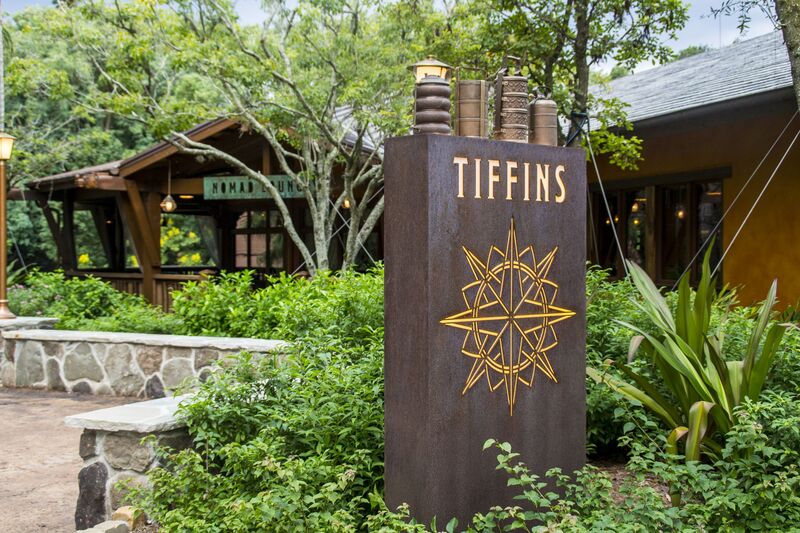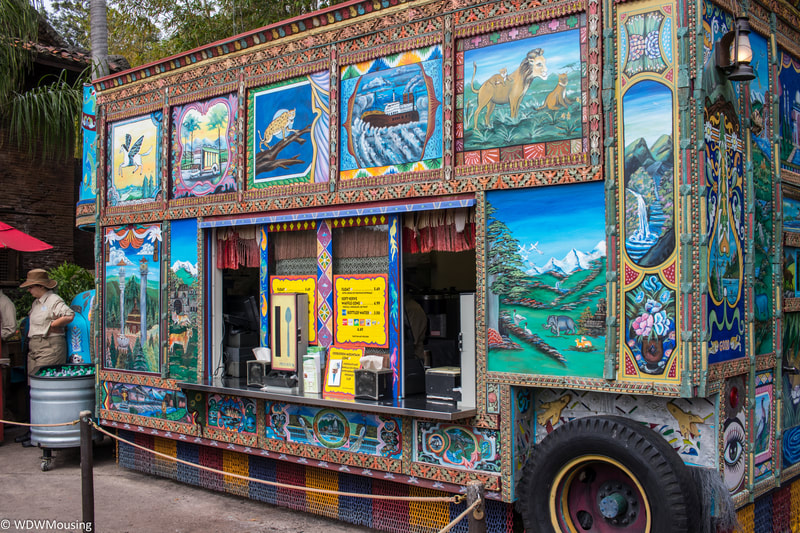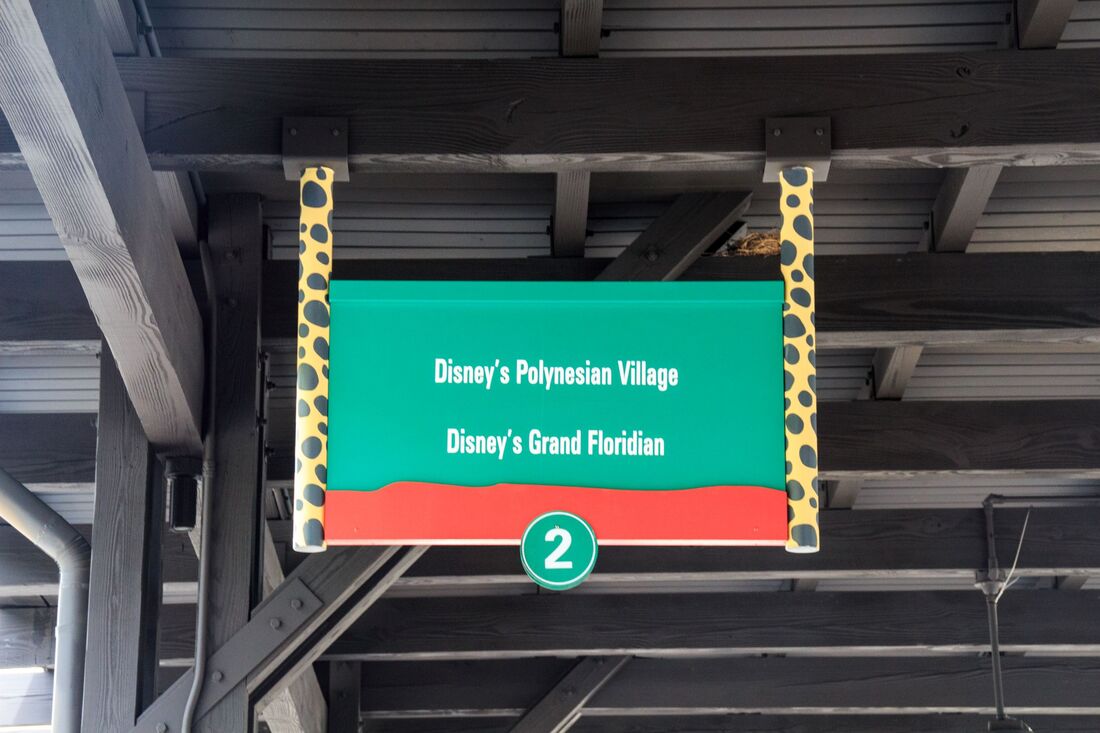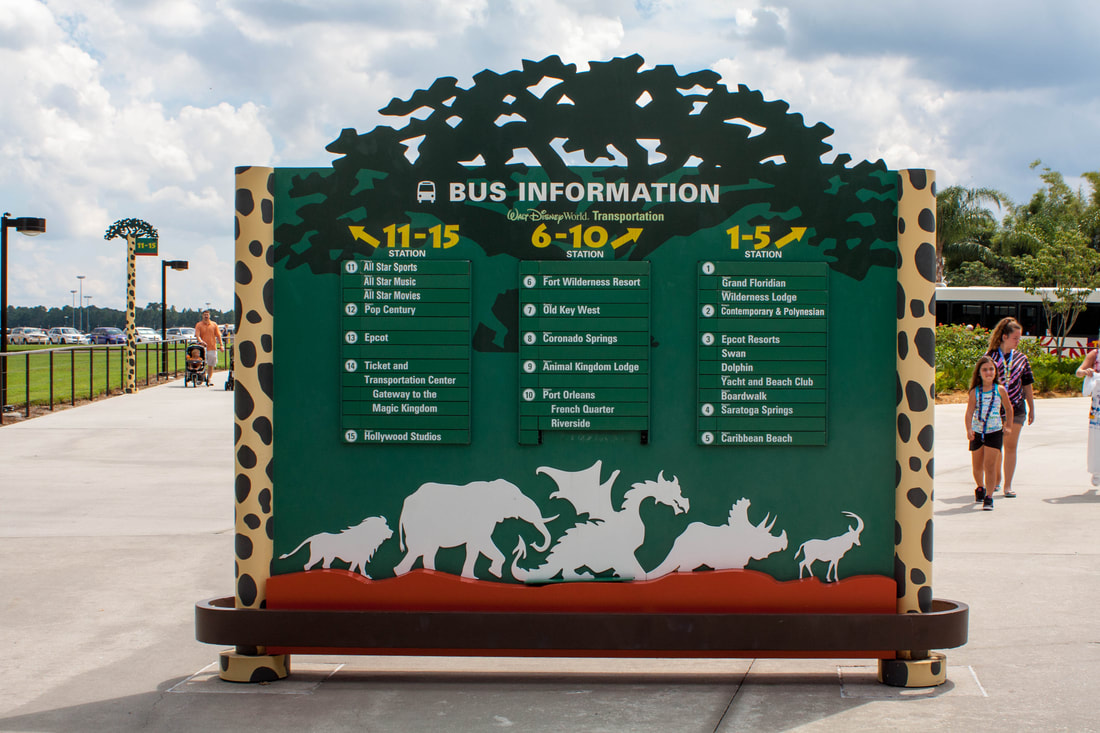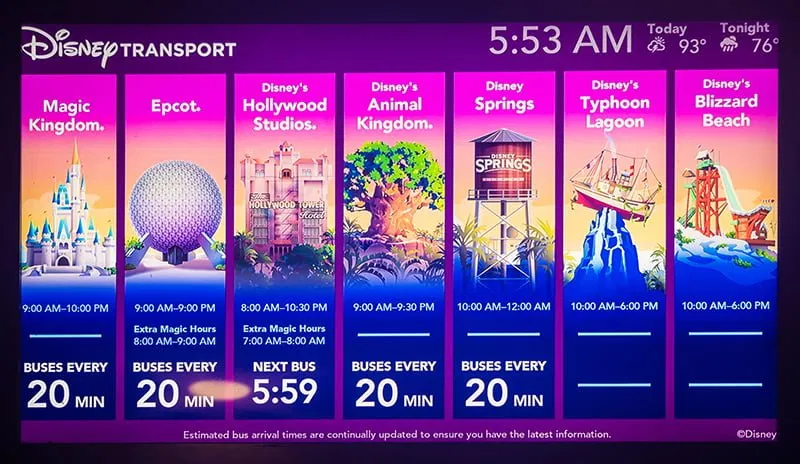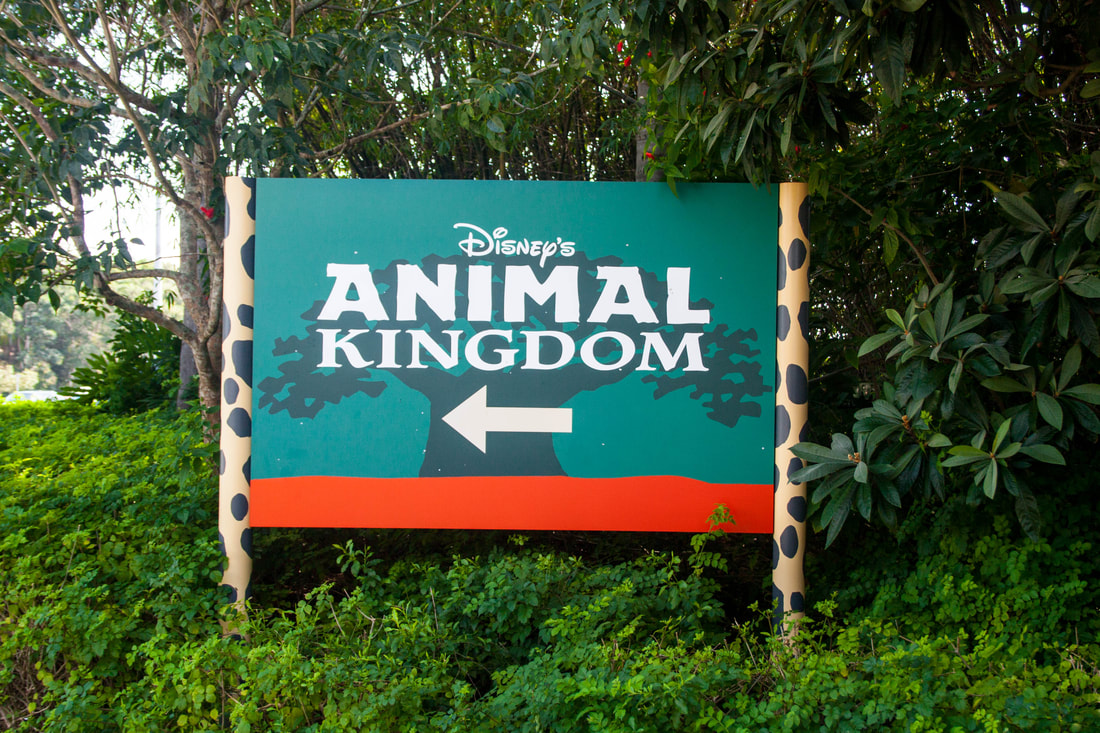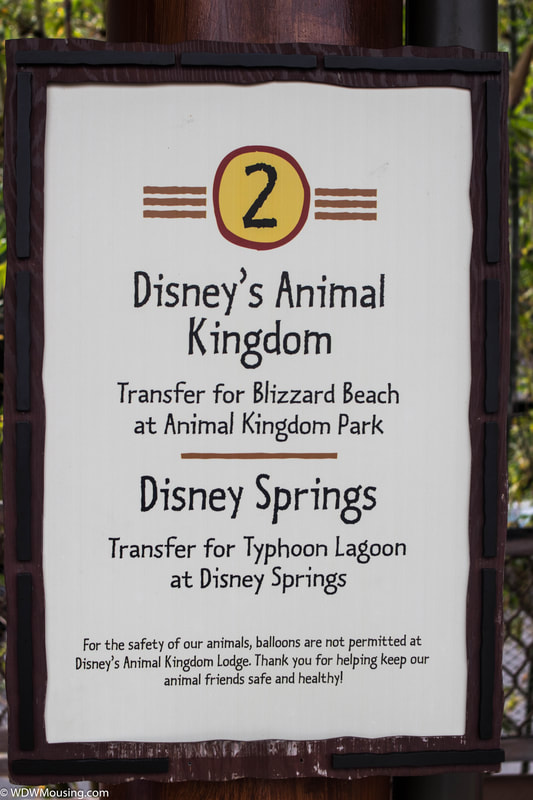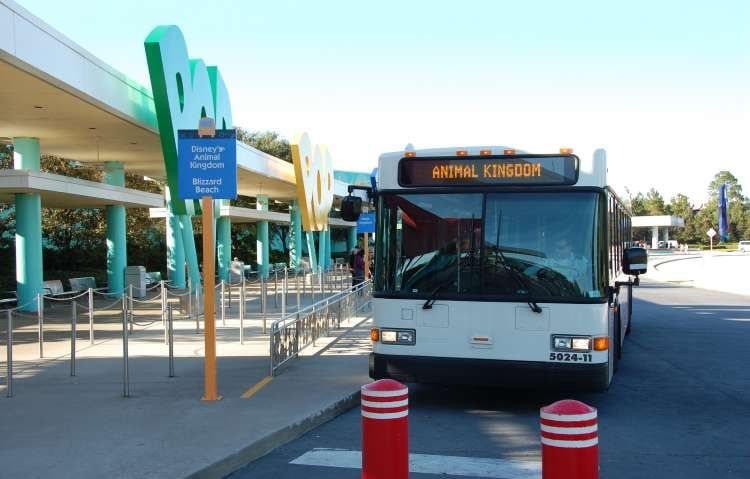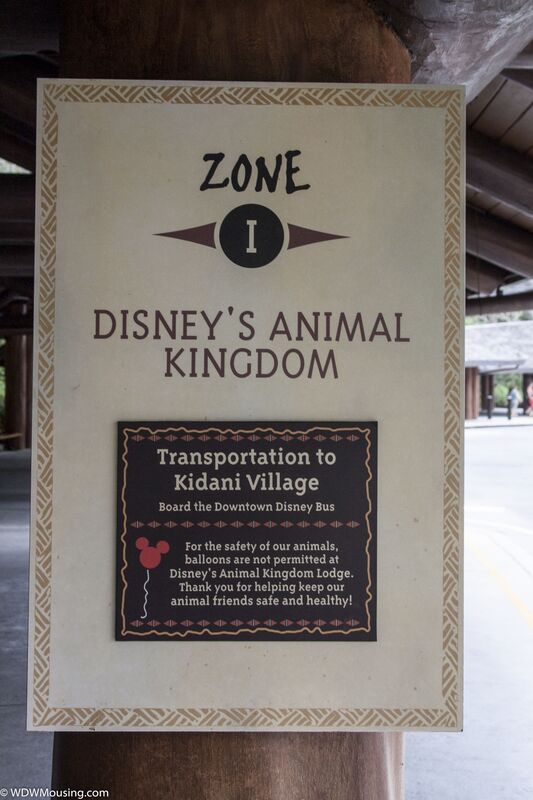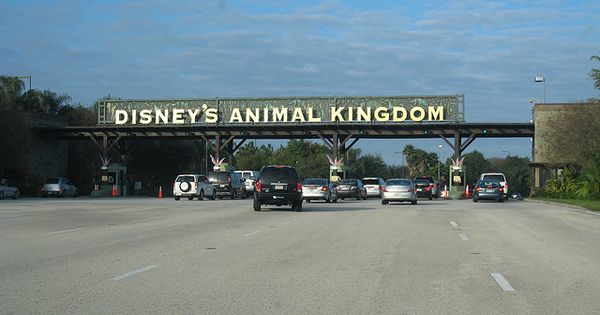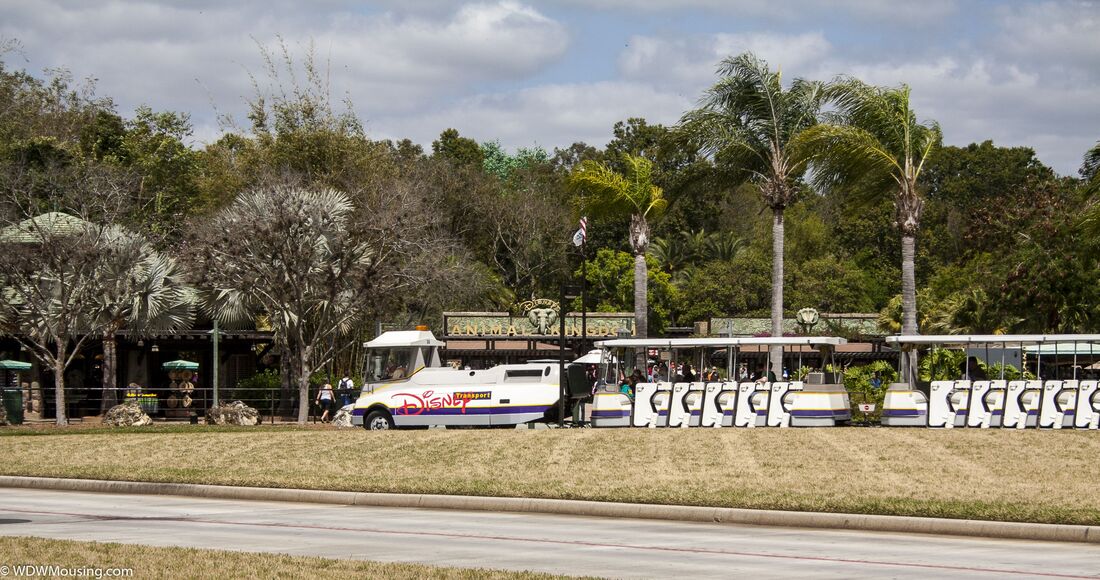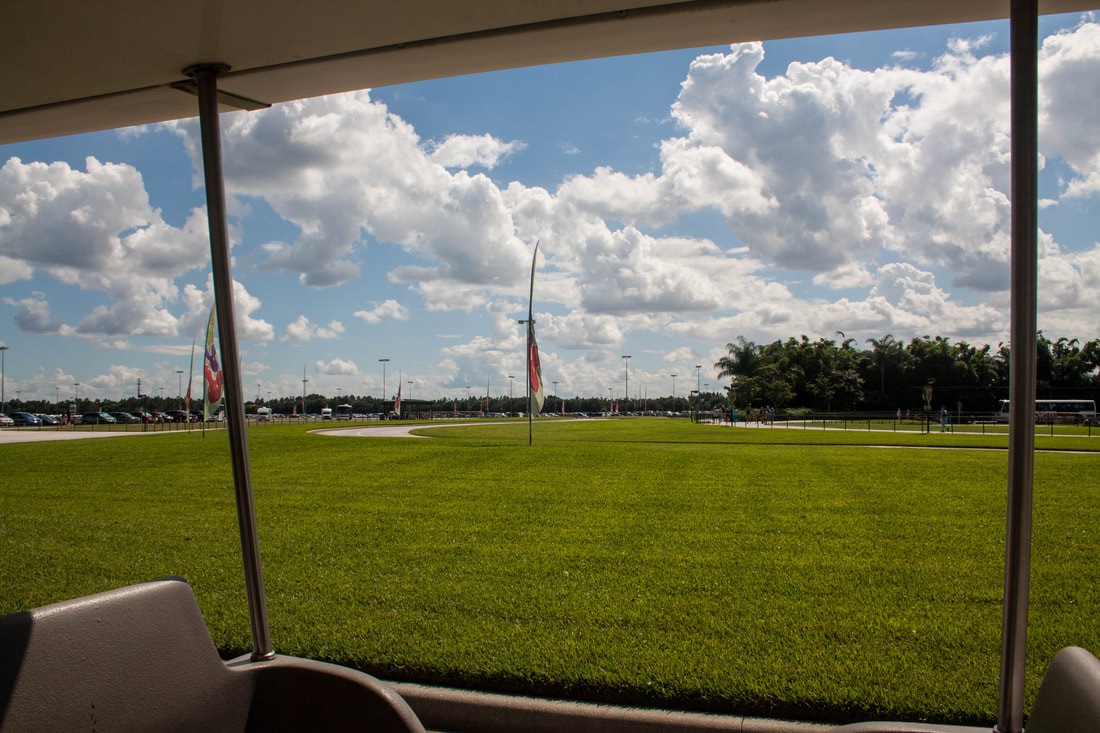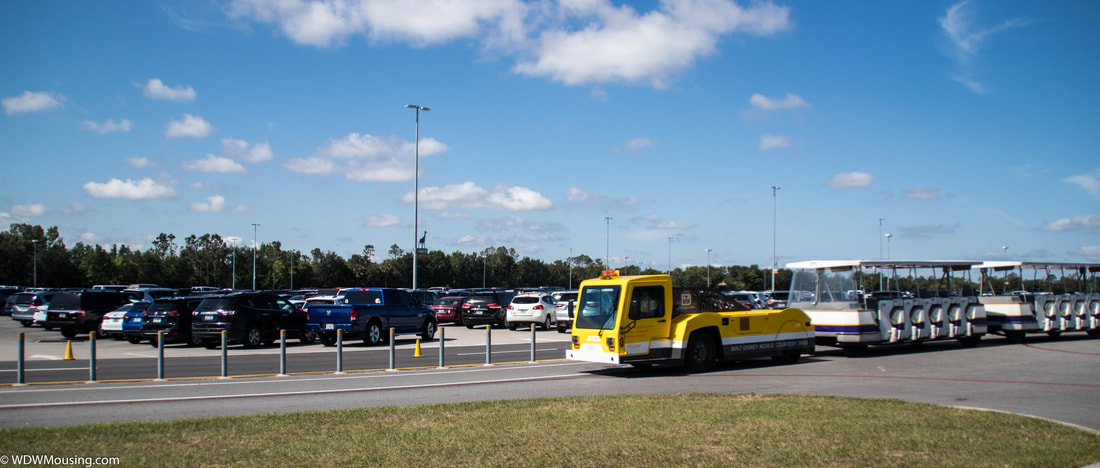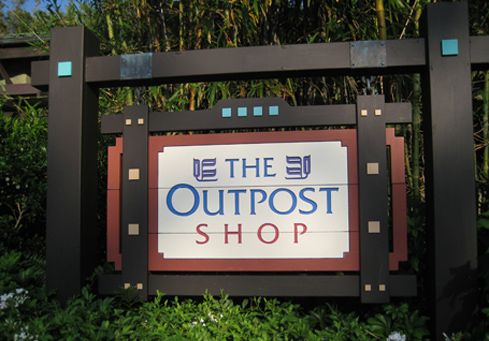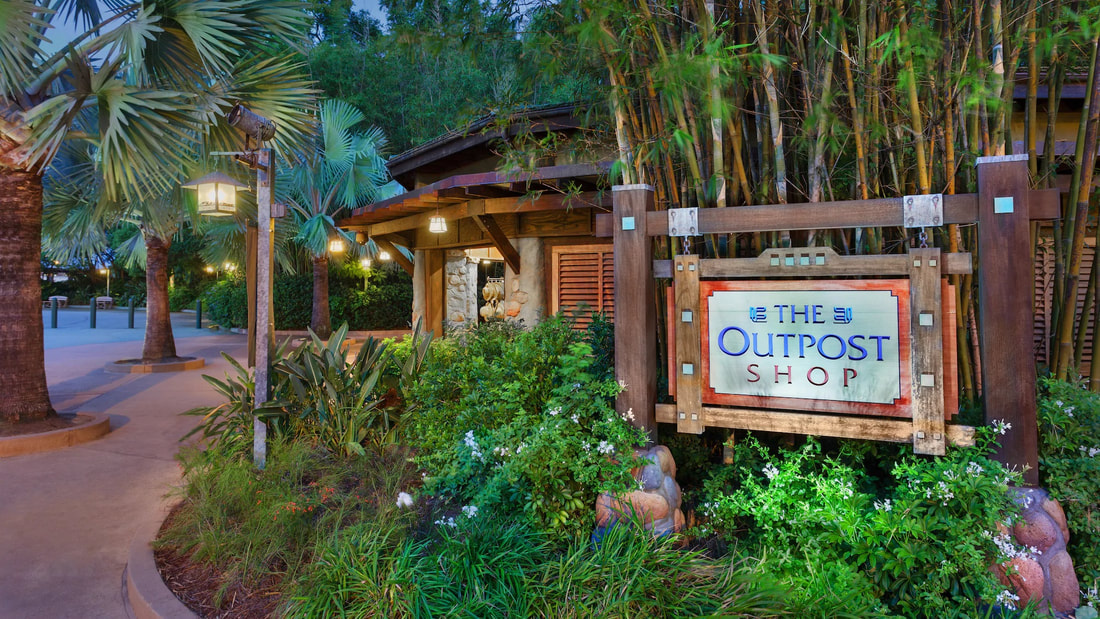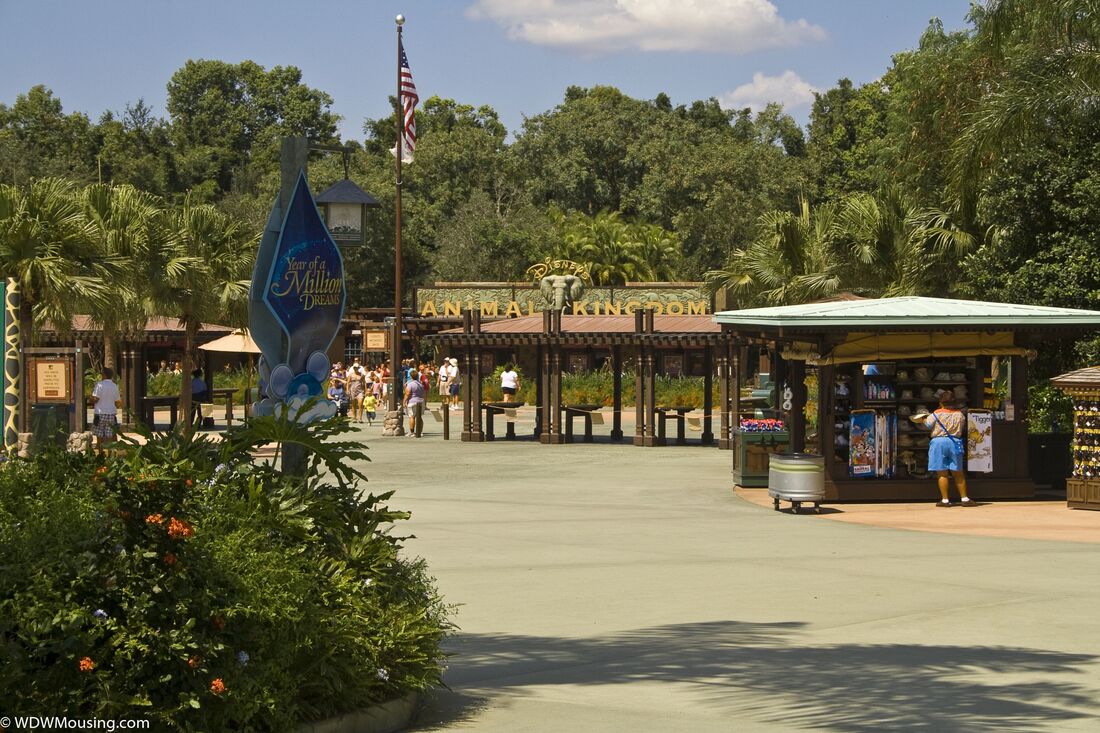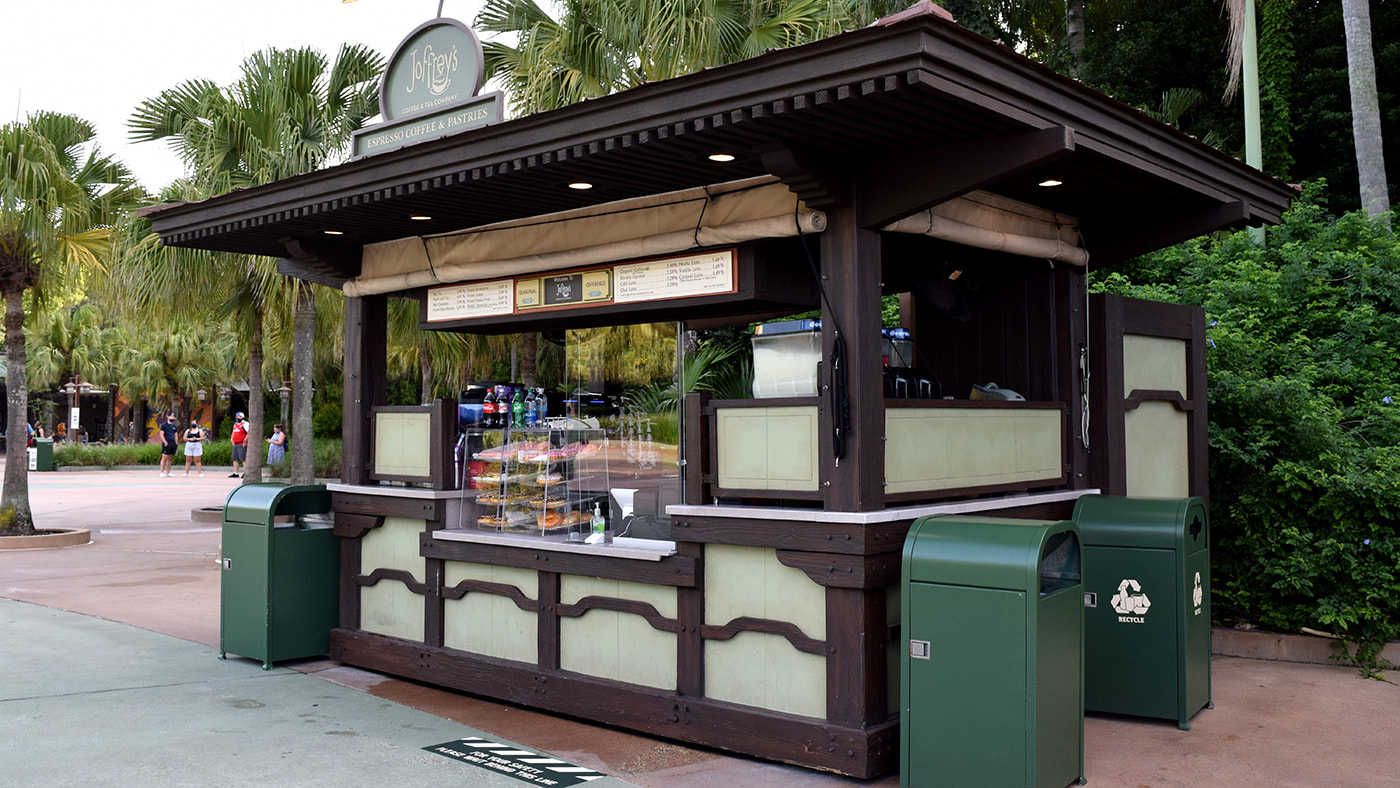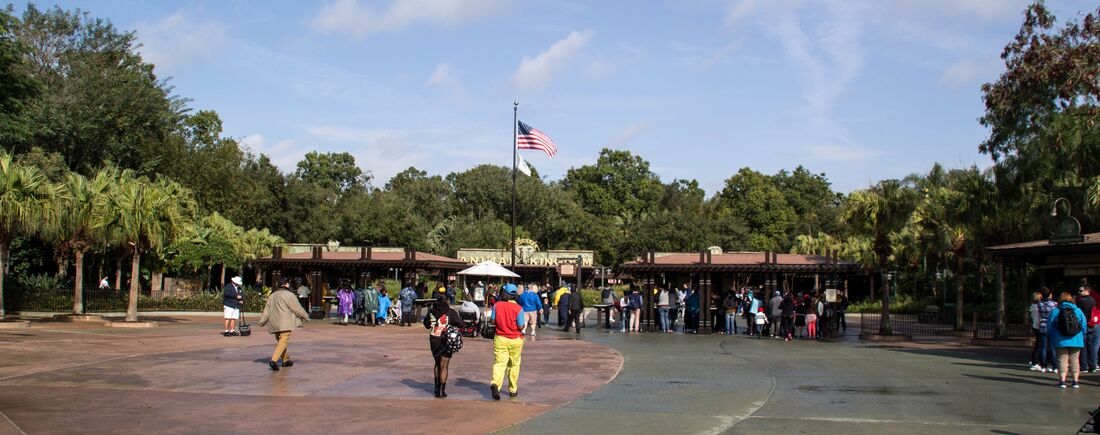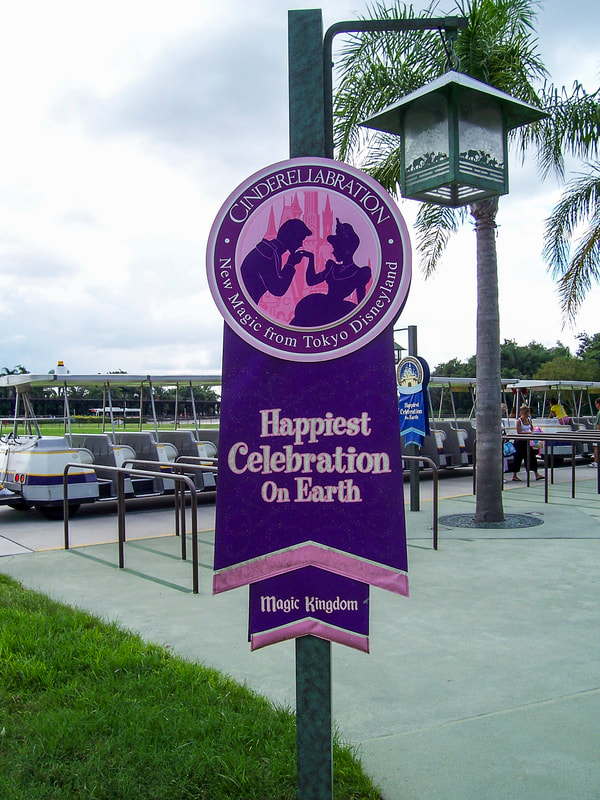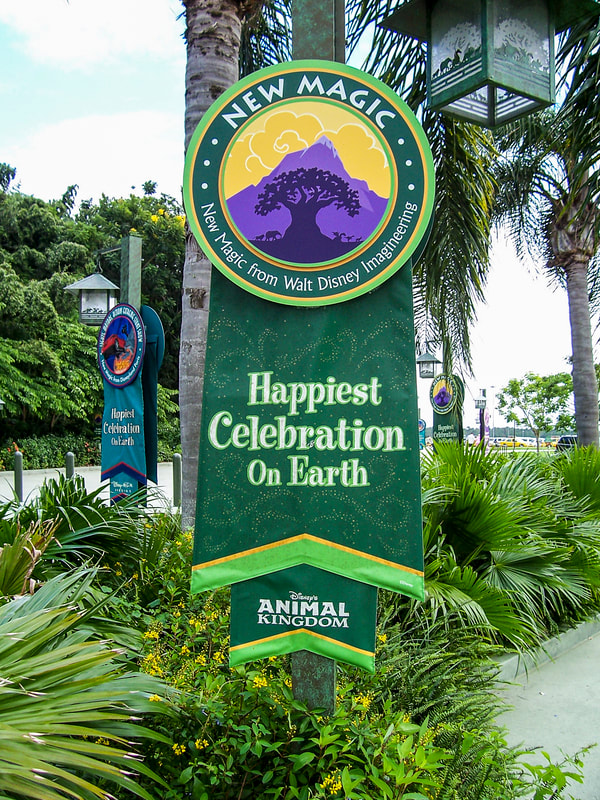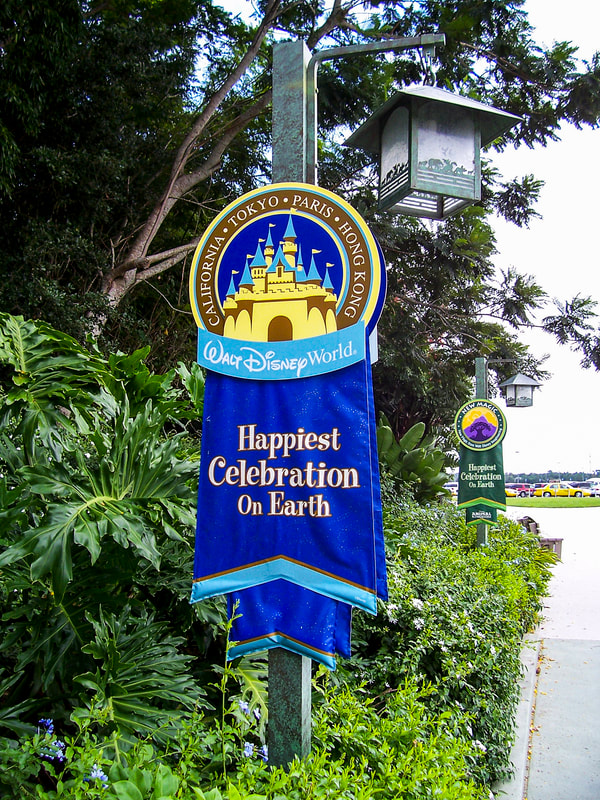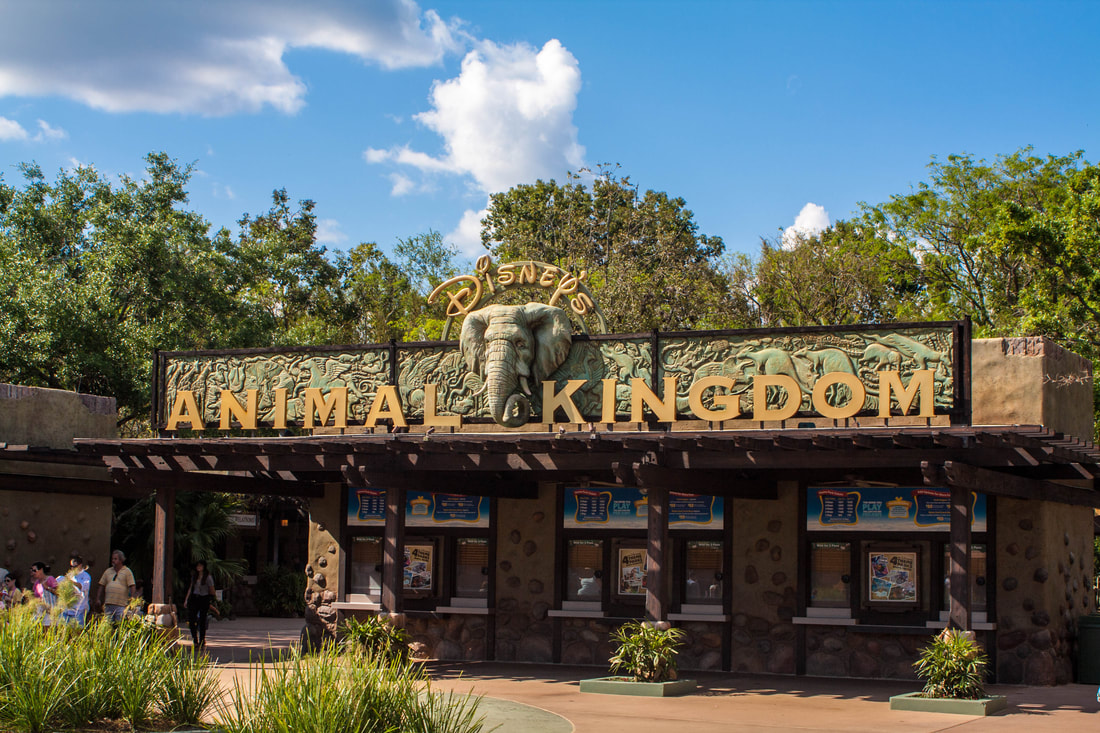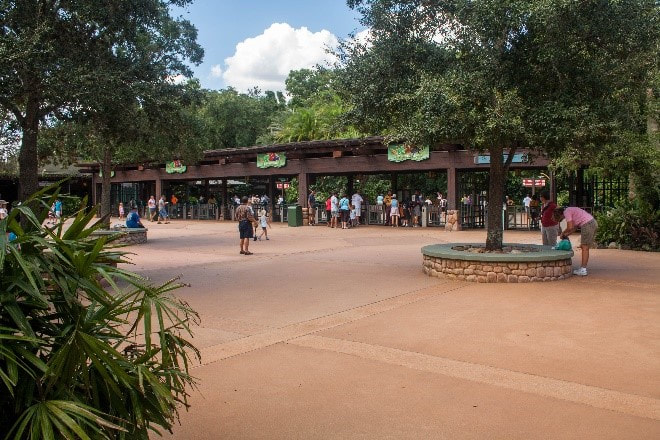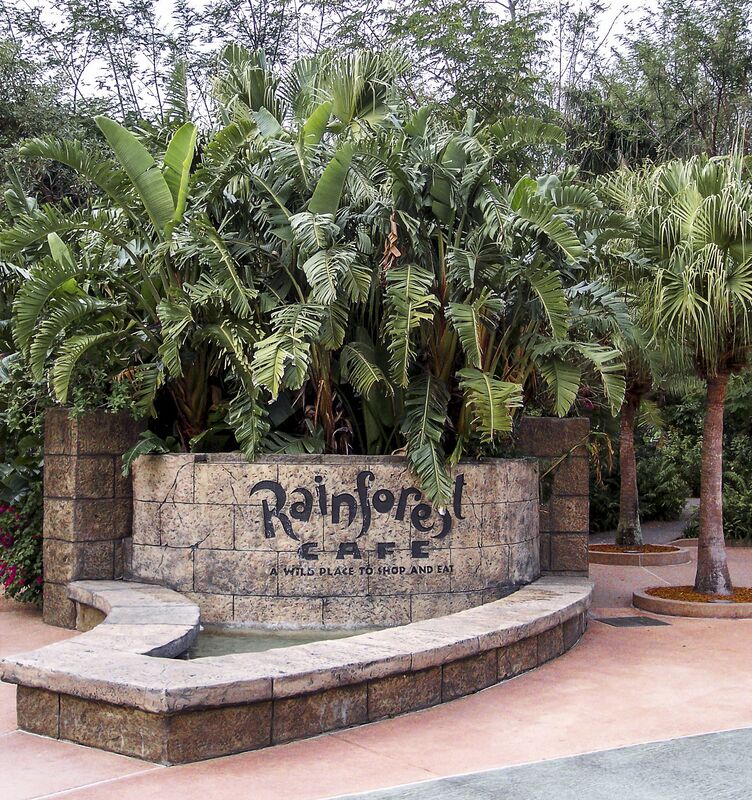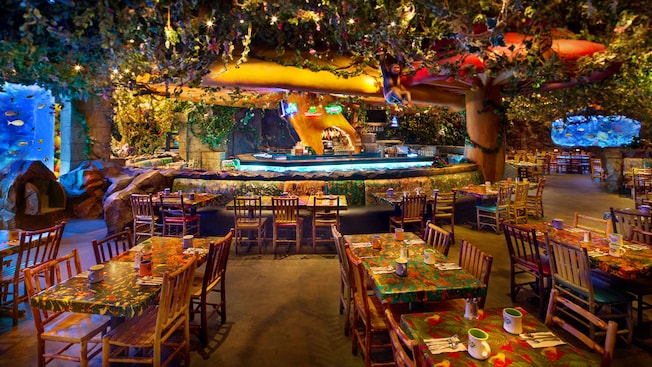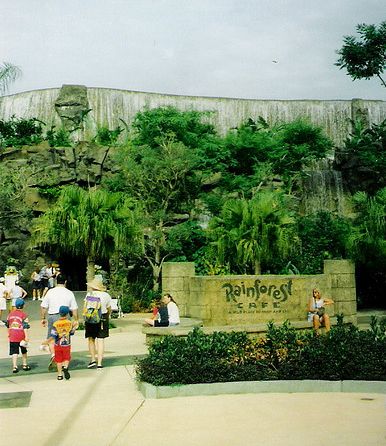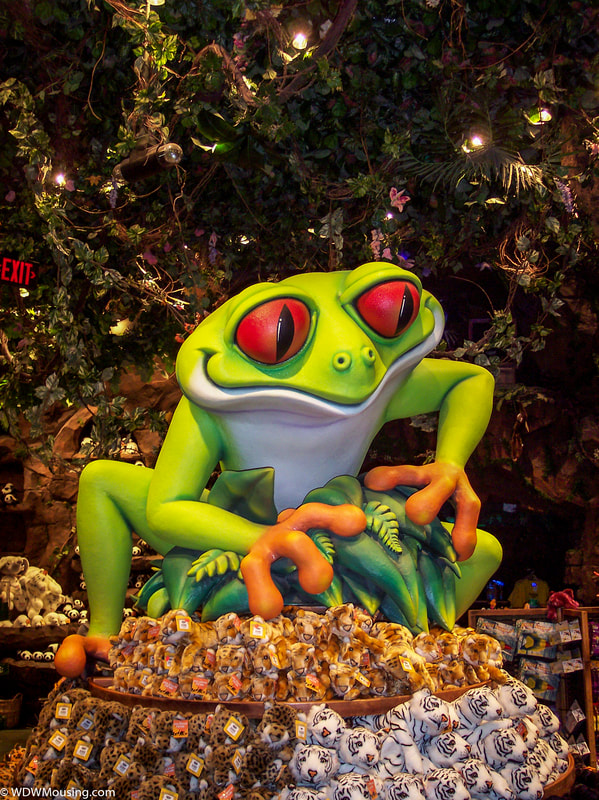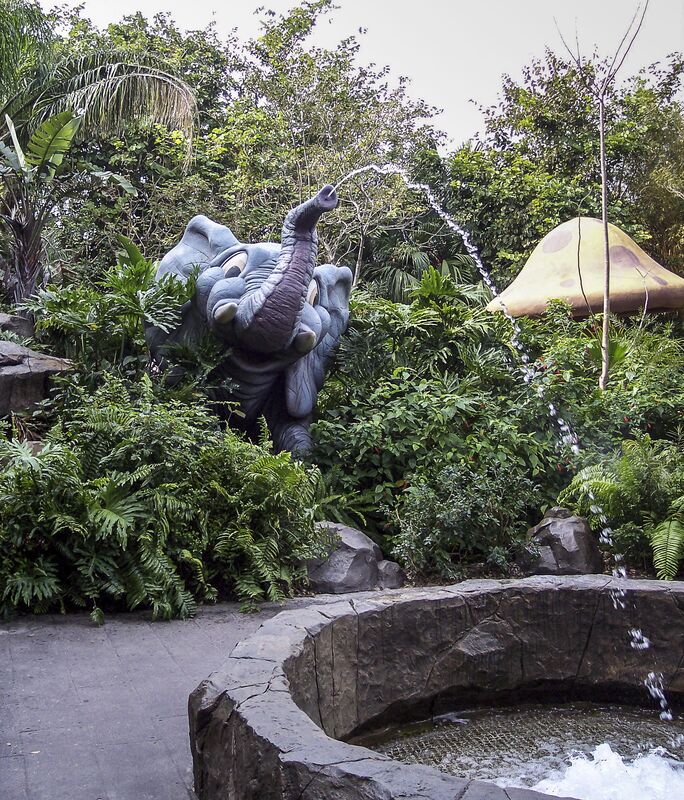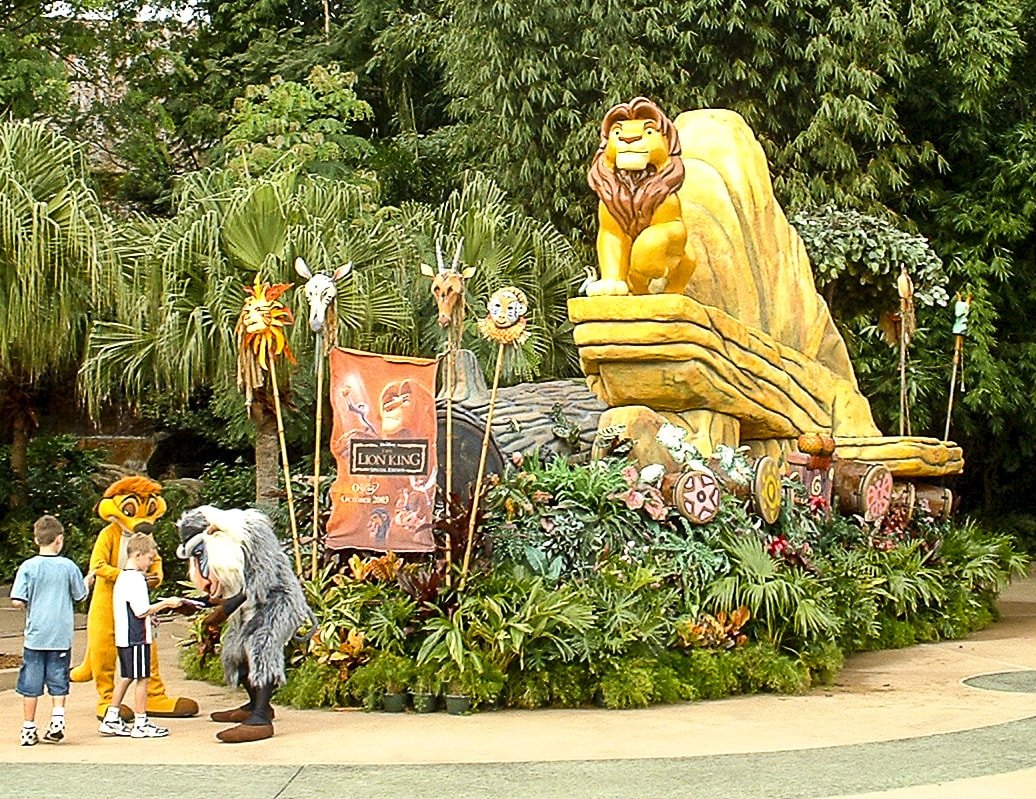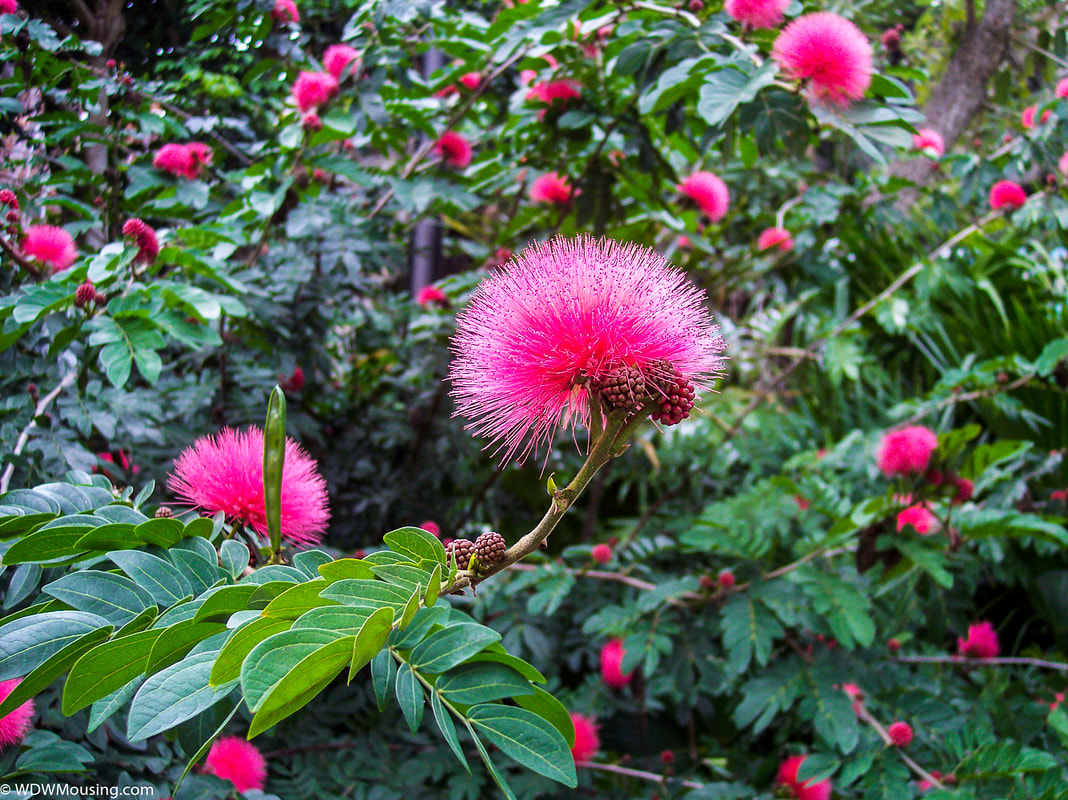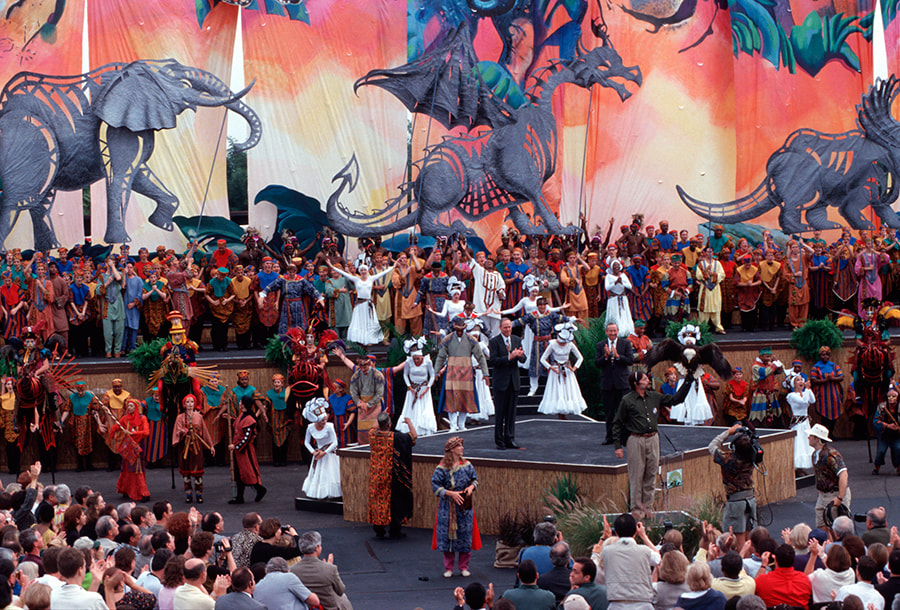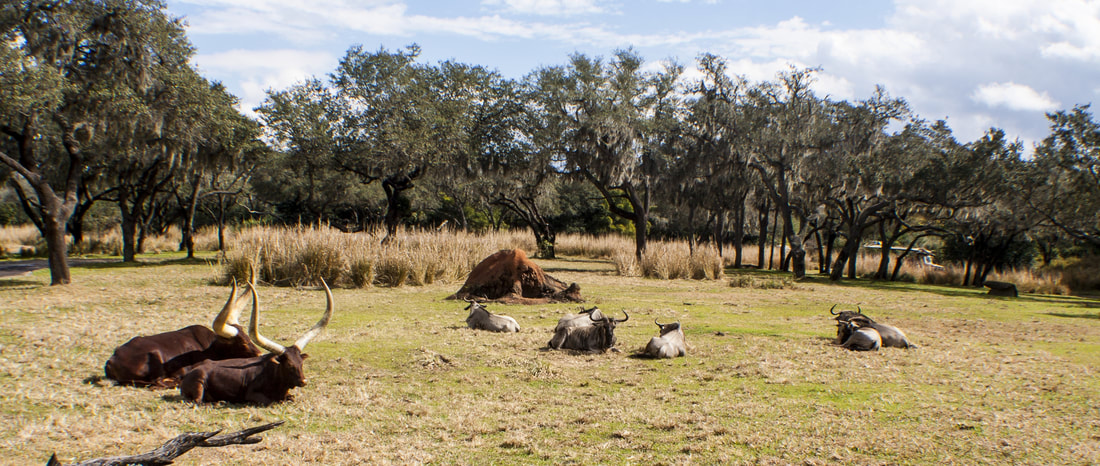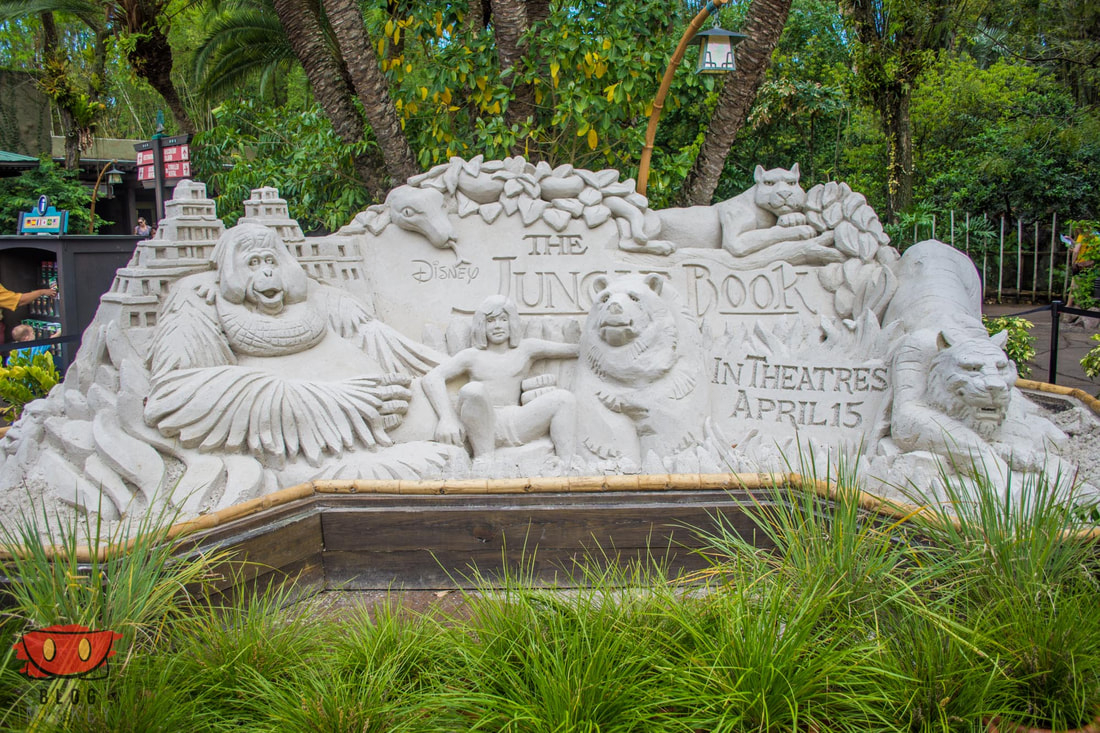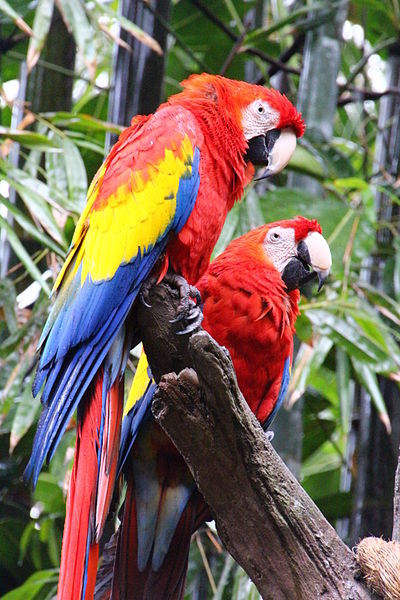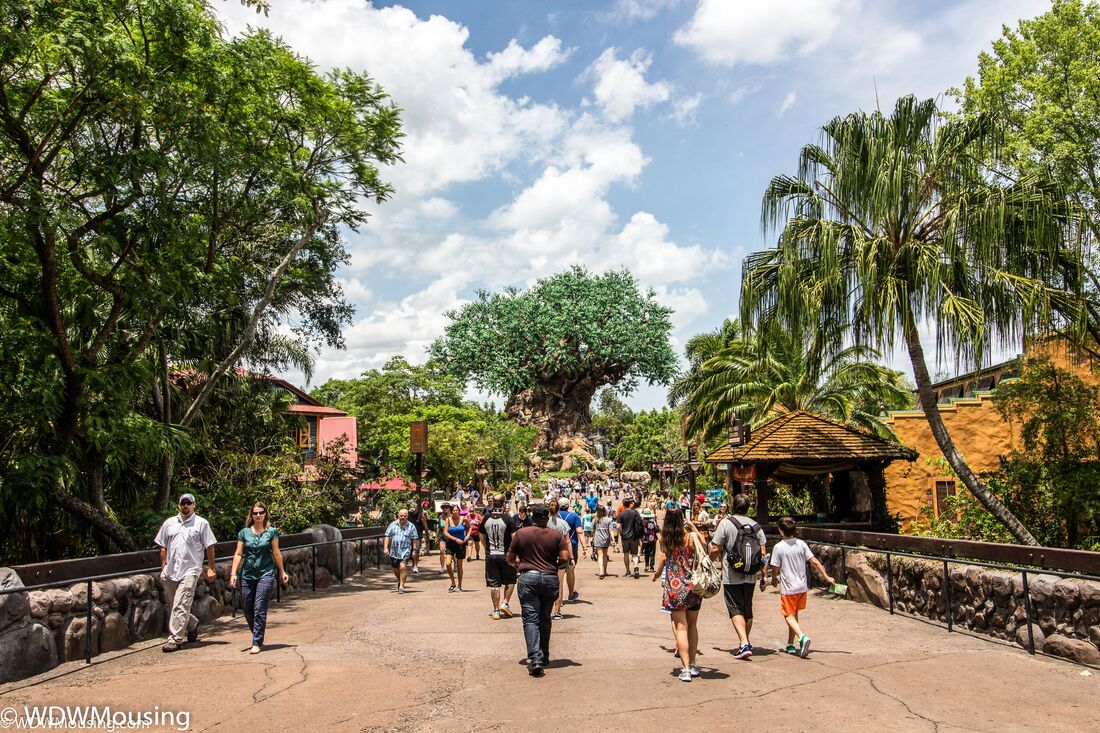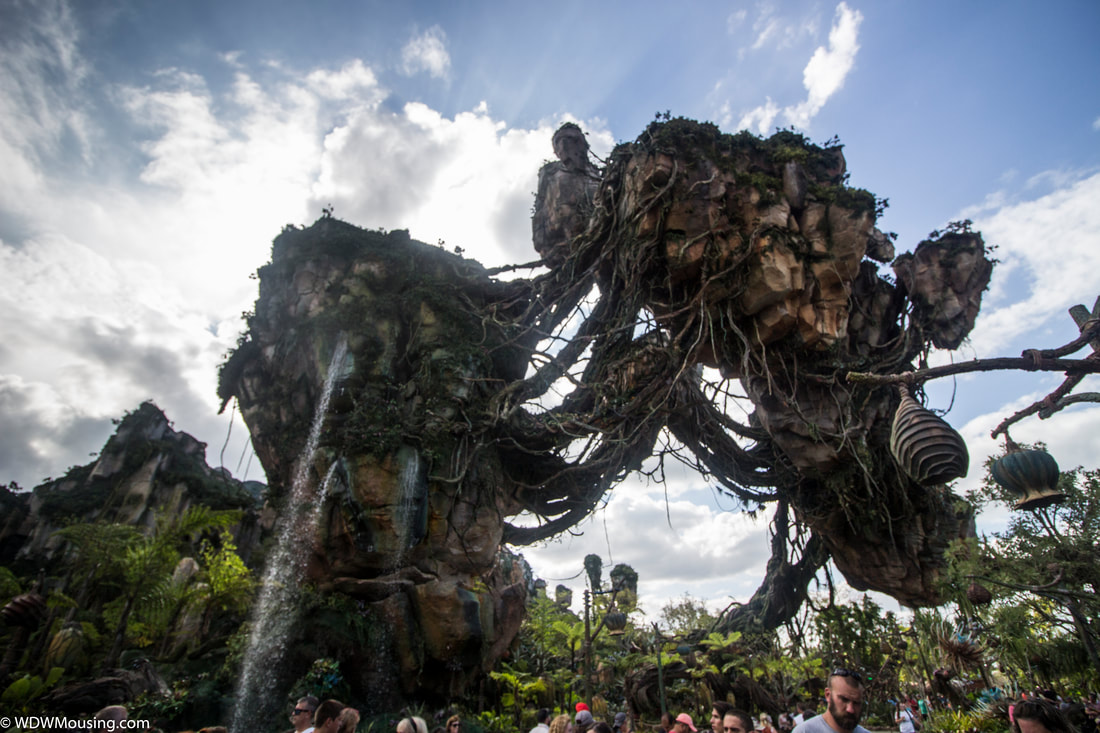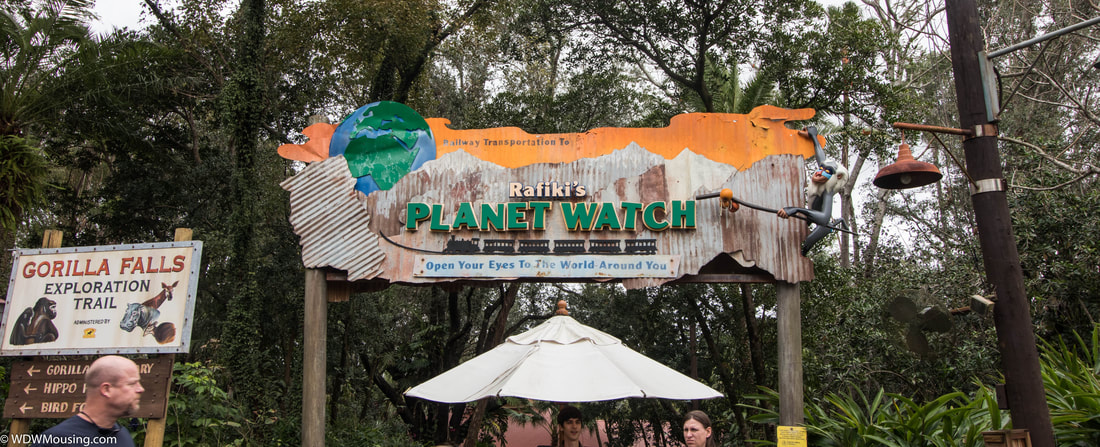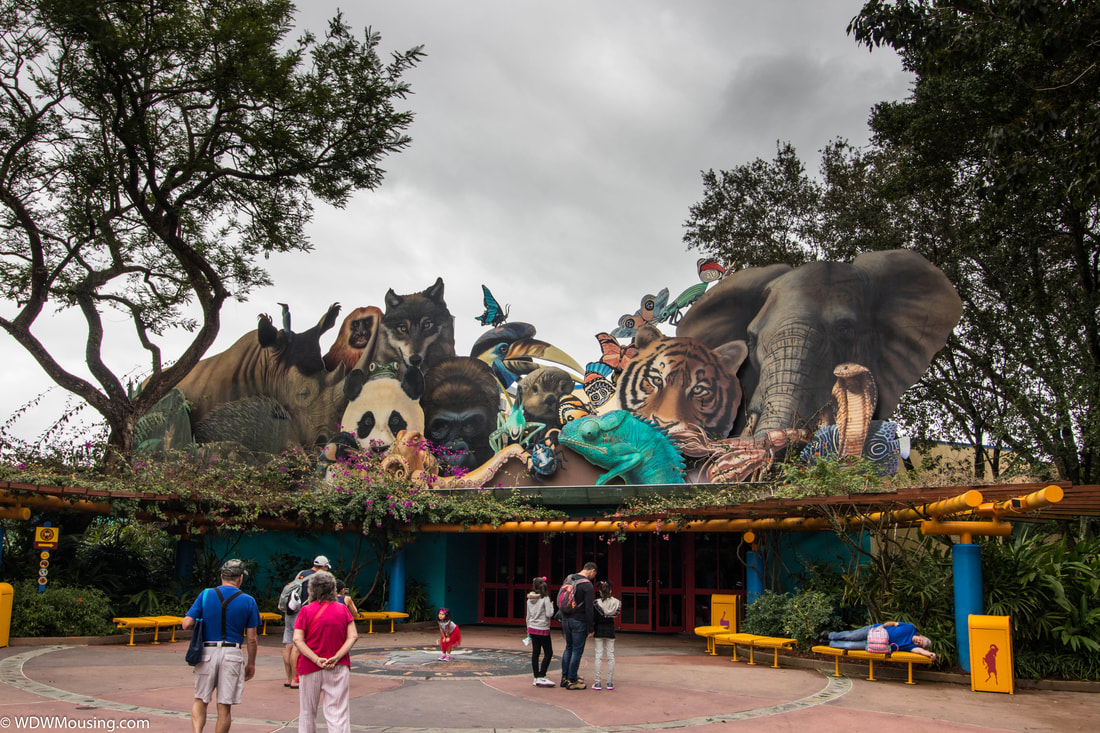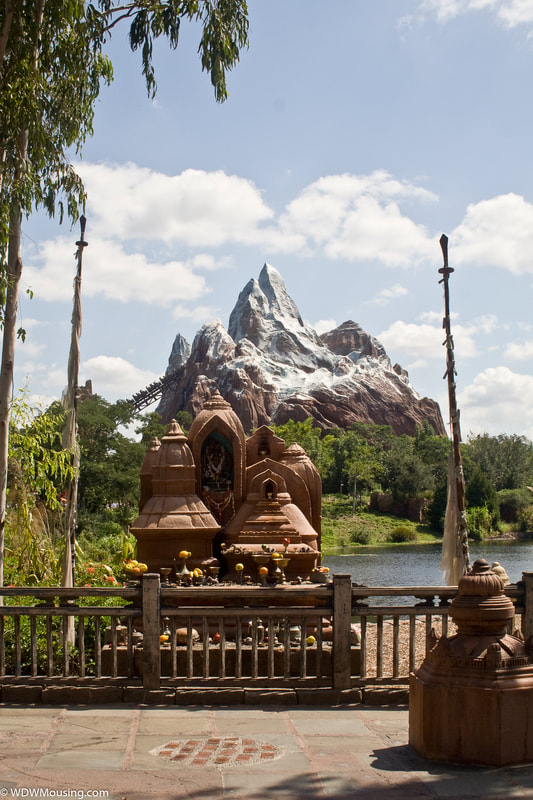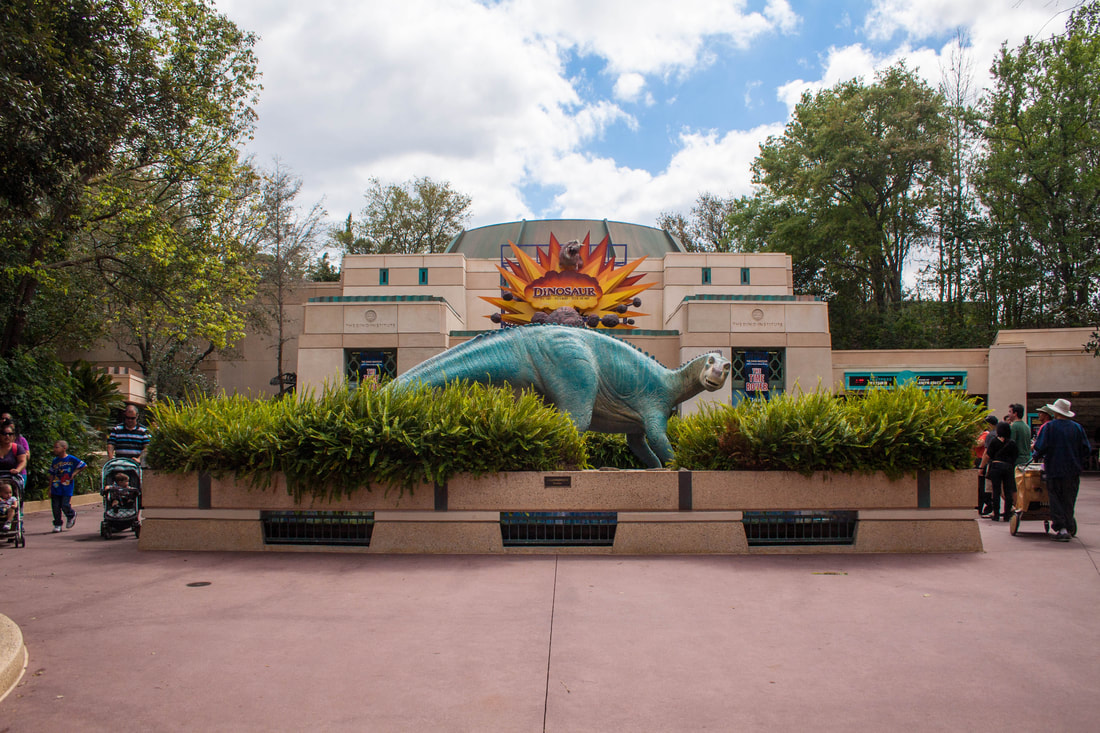Chapter 1 - Animal Kingdom - Getting There updated Feb 2021
click to enlarge
Animal Kingdom is located on the southwest corner of Walt Disney World
For the latest Walt Disney World Map:
Note: The BIGGEST Disney theme park in the world is Disney’s Animal Kingdom Theme Park, it’s over 580 acres.
Note: The BIGGEST Disney theme park in the world is Disney’s Animal Kingdom Theme Park, it’s over 580 acres.
With the addition of Pandora and nighttime activities the Animal Kingdom has become a must do and an all-day Park.
Not that the Animal Kingdom didn’t have enough before, with thrill rides like Expedition Everest, innovative characters, excellent shows, and an incredible collection of animal exhibits.
Not that the Animal Kingdom didn’t have enough before, with thrill rides like Expedition Everest, innovative characters, excellent shows, and an incredible collection of animal exhibits.
Now the park is open evenings, with light shows, night time activities and signature dining.
Getting There
It's important to know that you can only travel to the Animal Kingdom by bus or by car, since this park does not have monorail or boat service.
It's important to know that you can only travel to the Animal Kingdom by bus or by car, since this park does not have monorail or boat service.
By Bus
You can catch a bus to the Animal Kingdom from a resort or another Disney theme parks.
Depending on where the departure point is, the bus ride can take from five to 30 minutes.
You can catch a bus to the Animal Kingdom from a resort or another Disney theme parks.
Depending on where the departure point is, the bus ride can take from five to 30 minutes.
Disney Transportation times are not located at each bus terminal and most stops.
Getting There by Car
Driving to the Animal Kingdom is an alternative, the parking attendants will direct you to a parking spot.
Guests pay one fee for a parking pass that is good all day at all 4 theme parks—Magic Kingdom park, Epcot, Disney’s Hollywood Studios and Disney's Animal Kingdom theme park.
Driving to the Animal Kingdom is an alternative, the parking attendants will direct you to a parking spot.
Guests pay one fee for a parking pass that is good all day at all 4 theme parks—Magic Kingdom park, Epcot, Disney’s Hollywood Studios and Disney's Animal Kingdom theme park.
There is a tram that provides shuttle service from the back of the lot to the park's entrance.
But if guests are in one of the closest two parking lots, it will be faster to walk to the park entrance than wait for the tram.
Since the parking facility is so massive at the Animal Kingdom, remember the designated parking area and row number to help find your vehicle when you're ready to leave.
Resources:
But if guests are in one of the closest two parking lots, it will be faster to walk to the park entrance than wait for the tram.
Since the parking facility is so massive at the Animal Kingdom, remember the designated parking area and row number to help find your vehicle when you're ready to leave.
Resources:
Animal Kingdom Entrance Plaza
|
Well, we're at the Animal Kingdom Plaza, let's get into the mood with a little background music, as we enter the park. |
|
Outpost Cart As guests enter the Security and Ticket plaza, to the right is The Outpost Cart. Here guests find souvenirs from pins and plush to headwear, sundries, accessories and more! |
Outpost Shop
And on the left side of the entrance plaza is the Outpost Shop. This shop offers the same merchandise as the Outpost Cart plus more. |
|
Joffrey's Coffee
If you've arrived at Animal Kingdom and haven't had your cup of coffee yet or are just in the need for more coffee; there a Joffrey's Coffee Kiosk on the right side of the entrance plaza, just as you get off the Tram. |
Security
Security has become commonplace and it is at Walt Disney World also. Before entering the Ticket Plaza all guests and packages are inspected.
Security has become commonplace and it is at Walt Disney World also. Before entering the Ticket Plaza all guests and packages are inspected.
From May 2005 through September 2006, Walt Disney World joined in the 50th anniversary of Disneyland with the Happiest Celebration on Earth. During the celebration the Animal Kingdom introduced the Yeti with Expedition Everest.
After passing through Security, guests enter the Ticket Plaza.
To left side is the entrance to the Rainforest Café. You do not need theme park admission to dine at this location. There is also a back entrance/exit that leads into the Animal Kingdom.
Rainforest Cafe
|
The Rainforest Cafe has been there since the park opened in 1998, but one of the most striking visual features of early Animal Kingdom has vanished like the rainforests of South America.
For many years, a massive sheet of water thundered from the peak of the Rainforest Cafe roof, casting an ethereal shadow over the main ticketing courtyard. But the advancement, nature soon took over. The jungle canopy in front of the restaurant thickened into an impenetrable cover. With no one to witness their bewitching power, the beautiful waterfalls stopped running.
For the current menu: |
Over the years, the Plaza has also been an area where Disney would promote events, new attractions, and Shows.
Guest should also take note the Plaza and entrance areas are surrounded by variety of Trees, Plants and Flowers. (Green)
Background of Animal Kingdom
Walt Disney World Imagineers outdid themselves when they built the Animal Kingdom. The Animal Kingdom is a spectacular and specialized Disney Theme park aimed at showcasing the beauty and diversity of nature while striving to teach guests about the importance of conservation and preservation in entertaining ways.
Animal Kingdom was dedicated and opened to the public on Earth Day on April 22, 1998. Animal Kingdom is the largest theme park in the Disney World and second largest in the World at 580 acres. It is divided into 6 themed areas, including Oasis, Discovery Island, Africa, Asia, DinoLand U.S.A, and Pandora – The World of Avatar.
In the Animal Kingdom, guests can travel back to prehistoric times, shrink to the size of bugs, go white water rafting, climb Mt. Everest, take flight on a Banshee and embark on an African safari. With so much to do in Disney’s Animal Kingdom, many guests overlook the details that bring the park to life. In our journey we’re going to try and capture the background with the storyline in each of the themed areas.
Walt Disney World Imagineers outdid themselves when they built the Animal Kingdom. The Animal Kingdom is a spectacular and specialized Disney Theme park aimed at showcasing the beauty and diversity of nature while striving to teach guests about the importance of conservation and preservation in entertaining ways.
Animal Kingdom was dedicated and opened to the public on Earth Day on April 22, 1998. Animal Kingdom is the largest theme park in the Disney World and second largest in the World at 580 acres. It is divided into 6 themed areas, including Oasis, Discovery Island, Africa, Asia, DinoLand U.S.A, and Pandora – The World of Avatar.
In the Animal Kingdom, guests can travel back to prehistoric times, shrink to the size of bugs, go white water rafting, climb Mt. Everest, take flight on a Banshee and embark on an African safari. With so much to do in Disney’s Animal Kingdom, many guests overlook the details that bring the park to life. In our journey we’re going to try and capture the background with the storyline in each of the themed areas.
It all began
On April 21, 1998, Walt Disney World Resort dedicated its fourth theme park. Disney’s Animal Kingdom in a colorful ceremony celebrating with large puppets of birds flew over the crowd and other animals marched down the aisles, the dedication ceremony was a celebration of animals, conservation and the cast members who made Disney’s Animal Kingdom possible.
On April 21, 1998, Walt Disney World Resort dedicated its fourth theme park. Disney’s Animal Kingdom in a colorful ceremony celebrating with large puppets of birds flew over the crowd and other animals marched down the aisles, the dedication ceremony was a celebration of animals, conservation and the cast members who made Disney’s Animal Kingdom possible.

The elaborate grand-opening ceremony was attended by a crowd of 2,000, with primatologist Jane Goodall, Ph.D., playing a special role in the festivities. Michael Eisner, then chairman and chief executive officer, along with Roy E. Disney, former vice chairman of The Walt Disney Company were on hand to dedicate the park. Roy stated, “Disney’s Animal Kingdom, like the animal world itself, will evolve and grow. It’s truly a living thing.”
Then-CEO Michael Eisner introduced the theme park to the world, calling it “a kingdom we enter to share in the wonder, gaze at the beauty, thrill at the drama and learn.”
Note: Dame Jane Morris Goodall is an English primatologist and anthropologist, considered to be the world's foremost expert on chimpanzees.
Then-CEO Michael Eisner introduced the theme park to the world, calling it “a kingdom we enter to share in the wonder, gaze at the beauty, thrill at the drama and learn.”
Note: Dame Jane Morris Goodall is an English primatologist and anthropologist, considered to be the world's foremost expert on chimpanzees.

The dedication plaque is engraved and found in The Oasis beneath bushes just past the turnstiles. The plaque reads:
DISNEY’S ANIMAL KINGDOM
Welcome to a kingdom of animals… real, ancient and imagined: a kingdom ruled by lions, dinosaurs and dragons; a kingdom of balance, harmony and survival; a kingdom we enter to share in the wonder, gaze at the beauty, thrill at the drama, and learn.
Dedicated this 22nd day of April, 1998
Michael D. Eisner
DISNEY’S ANIMAL KINGDOM
Welcome to a kingdom of animals… real, ancient and imagined: a kingdom ruled by lions, dinosaurs and dragons; a kingdom of balance, harmony and survival; a kingdom we enter to share in the wonder, gaze at the beauty, thrill at the drama, and learn.
Dedicated this 22nd day of April, 1998
Michael D. Eisner
Reference:
History
Walt Disney was always fascinated by the exotic, wild animals. During Walt’s childhood on a farm, he developed a passion for animals that never left. In the 1950s, Walt had created the True-Life Adventures documentaries. The films, documenting the natural behavior of animals as diverse as seals and bighorn sheep. Eight of the documentaries went on to win Academy Awards. Disney’s True-Life Adventures provided many people with the only glimpse they could have of authentic animal behavior.
When Disneyland was in the planning phases, Walt desperately wanted to use live animals in the Jungle Cruise attraction. However, with the technology available at the time, it would been difficult to maintain and control and that wandering animals would damage the storyline of the attraction.
With the success of Hollywood Studios, Michael Eisner declared that the 1990s would be the "Disney Decade," with an exceptional expansion of the company's theme parks. Animal Kingdom was the brainchild of Imagineer Joe Rohde, who had previously designed the Adventurers Club at Pleasure Island. When presenting the idea of the new Animal-themed Park, Rohde brought a 400-pound Bengal tiger into the meeting with Disney CEO Michael Eisner. In 1995, Disney announced plans for the construction of the park. To design the theme park, Disney Imagineers traveled to Africa and Asia to study the landscapes and wildlife.
Disney had a movie studio park, and aquarium in Epcot. What Walt Disney World didn't have was a live land-animal park with thrill rides.
By July 1996, construction was underway on the animal holding facilities as well as the installation of trees, shrubs, and grasses to shape the park's African Savanna-inspired landscape.
Walt Disney was always fascinated by the exotic, wild animals. During Walt’s childhood on a farm, he developed a passion for animals that never left. In the 1950s, Walt had created the True-Life Adventures documentaries. The films, documenting the natural behavior of animals as diverse as seals and bighorn sheep. Eight of the documentaries went on to win Academy Awards. Disney’s True-Life Adventures provided many people with the only glimpse they could have of authentic animal behavior.
When Disneyland was in the planning phases, Walt desperately wanted to use live animals in the Jungle Cruise attraction. However, with the technology available at the time, it would been difficult to maintain and control and that wandering animals would damage the storyline of the attraction.
With the success of Hollywood Studios, Michael Eisner declared that the 1990s would be the "Disney Decade," with an exceptional expansion of the company's theme parks. Animal Kingdom was the brainchild of Imagineer Joe Rohde, who had previously designed the Adventurers Club at Pleasure Island. When presenting the idea of the new Animal-themed Park, Rohde brought a 400-pound Bengal tiger into the meeting with Disney CEO Michael Eisner. In 1995, Disney announced plans for the construction of the park. To design the theme park, Disney Imagineers traveled to Africa and Asia to study the landscapes and wildlife.
Disney had a movie studio park, and aquarium in Epcot. What Walt Disney World didn't have was a live land-animal park with thrill rides.
By July 1996, construction was underway on the animal holding facilities as well as the installation of trees, shrubs, and grasses to shape the park's African Savanna-inspired landscape.
Most of the park's animals were acquired by fall 1997.
Disney’s Animal Kingdom theme park would include lands devoted to exhibits of African and Asian wildlife, as well as lands inspired by extinct and imaginary animals. The thrill rides would be located in the lands devoted to dinosaurs and to mythical creatures such as dragons and unicorns, as not to disturb the animals in the park’s Asia and Africa sections.
Disney opted for what became Dinoland USA over Beastly Kingdom because it had the animated movie Dinosaur (which debuted in 2000) in production.
A movie tie-in also resulted in the park’s centerpiece icon, the Tree of Life. The 4D film shown in its theater, It’s Tough to be a Bug, features characters from the Pixar animated film A Bug’s Life, which debuted seven months after the park’s opening.
Disney’s Animal Kingdom theme park would include lands devoted to exhibits of African and Asian wildlife, as well as lands inspired by extinct and imaginary animals. The thrill rides would be located in the lands devoted to dinosaurs and to mythical creatures such as dragons and unicorns, as not to disturb the animals in the park’s Asia and Africa sections.
Disney opted for what became Dinoland USA over Beastly Kingdom because it had the animated movie Dinosaur (which debuted in 2000) in production.
A movie tie-in also resulted in the park’s centerpiece icon, the Tree of Life. The 4D film shown in its theater, It’s Tough to be a Bug, features characters from the Pixar animated film A Bug’s Life, which debuted seven months after the park’s opening.
|
Disney’s Animal Kingdom is the fourth most-visited theme park in America. Despite the loss of the Beastly Kingdom project, Animal Kingdom did eventually get its roller coaster, when Expedition Everest debuted in the park’s Asia section in 2006.
And the park got its land based on imaginary creatures, as Disney developed a land based on the James Cameron movie Avatar to replace the Camp Minnie-Mickey area that was the original site of Beastly Kingdom. Animal Kingdom represents the culmination of one of Walt Disney’s greatest dreams, a dream that began in childhood on a Missouri farm. At last, Walt’s True-Life Adventures have come to life. Animals lurk around every corner, as guests stroll through faithfully recreated towns from lands as diverse as Asia and Africa. Extinct animals have found a home as well, with an entire land devoted to dinosaurs. Animal Kingdom is as educational as it is entertaining, adding a conservation message to virtually everything it provides. |
Sources:
Animal Kingdom
Animal Kingdoms is composed of 7 Lands:
Oasis, Discovery Island, Africa, Asia, DinoLand U.S.A, and Pandora – The World of Avatar.
Animal Kingdoms is composed of 7 Lands:
Oasis, Discovery Island, Africa, Asia, DinoLand U.S.A, and Pandora – The World of Avatar.
The Tree of Life, the park's Icon is a sculpted, man-made baobab tree. As guest cross over the bridge from Oasis to Discovery Island the Tree of Life is the most prominent sight they will see. The Tree is surrounded by trails and animal enclosures. Inside the Tree of Life is It's Tough to Be a Bug!, a 3D film inspired by the 1998 Disney·Pixar animated film, A Bug's Life. The park's largest gift shops and three of its major restaurants are located on Discovery Island, Tiffin, Pizzafari and Flame Tree Barbeque. |
The village is the namesake of the Harambe Wildlife Preserve, the fictional home of Africa's main attraction, Kilimanjaro Safaris. On the adjacent Gorilla Falls Exploration Trail, visitors walk through the forest where other animals can be seen. On the western side of Africa is the Harambe Theater, which is home to the Festival of the Lion King, a stage attraction based on Disney's 1994 film, The Lion King. |
On the return trip guests encounter Habitat Habit!, where they can see cotton-top tamarins and learn about the efforts to protect these endangered primates in their natural homes. Conservation Station showcases the various conservation efforts supported by the Walt Disney Company. It also gives a behind-the-scenes glimpse into Disney's Animal Kingdom's animal care facilities, including a veterinary examination room complete with a two-way communications system so the veterinary staff can answer guest questions. Outside, Affection Section is a petting zoo featuring goats, sheep, and other domesticated animals. The area closed briefly in October 2018, and reopened in July 2019, featuring The Animation Experience at Conservation Station. |
The Imagineering backstory for the land, Anandapur was established as a royal hunting preserve in 1544. Anandapur contains both the riverside village of Anandapur, and Serka Zong, which is set in the foothills of the Himalayas. Portraits of Anandapur's royal family (consisting of the maharaja and his wife) can be found in most of the businesses within the two villages, a map of the kingdom featuring both villages and their location relative to the mountains and river can be found on the wall of the Disney Vacation Club kiosk located there. Much like Harambe, Anandapur is now a center of animal research and tourism. The visual focal point of Asia is Expedition Everest: Legend of the Forbidden Mountain, a steel roller coaster ride through the Forbidden Mountain of the Himalayas where passengers encounter a Yeti. Nearby is Kali River Rapids, a river rapids ride along the Chakranadi River through a rainforest, past an illegal logging operation and down a waterfall. The Maharajah Jungle Trek leads guests through the forests and ruins outside the village, which are home to many Asian and over 50 bird species. UP! A Great Bird Adventure Show, a live bird show where one of Anandapur's bird researchers educates Russell and Dug from Up, about natural bird behaviors, the effects of habitat loss and conservation efforts on bird species, such as the black crowned crane and bald eagle. In between Asia and DinoLand U.S.A. on the banks of the park's Discovery River is Rivers of Light, a nighttime show featuring mist screens, water fountains, floating lanterns, music, and lighting. |
- DinoLand U.S.A.
At the nearby Boneyard, there is a multi-leveled playground area with a Columbian mammoth fossil to be uncovered and a cast skeleton of a Brachiosaurus.
|
Next to the Institute and its surrounding facilities, is Chester and Hester's Dino-Rama, which recalls the many roadside attractions that were once scattered throughout the United States, being constructed by the owners of an old gas station hoping to take advantage of the tourism business the Institute has brought in. The area features Primeval Whirl, a steel Wild Mouse spinning roller coaster, the Triceratops Spin aerial carousel ride, carnival games and gift shops. At the eastern edge of DinoLand U.S.A. is the Theater in the Wild, which hosts Finding Nemo – The Musical, a live-action musical stage show based on the story of the 2003 Disney Pixar animated film Finding Nemo.
Like the other sections of Disney's Animal Kingdom, there are animals on display. The animals, such as the American crocodile, red legged seriemas, Abdim's stork and Asian brown tortoise, have evolutionary links to the age of the dinosaurs. They are animal species that have survived since the dinosaur era and can be found along the Cretaceous Trail along with a collection of Mesozoic plants. |

- Camp Minnie-Mickey
The area's main attraction was the Festival of the Lion King, a live stage show featuring acrobatics and musical performances inspired by The Lion King. Which was moved to the Africa's Harambe Theater when the land was closed.
Pocahontas and Her Forest Friends, based on the 1995 animated film, was a live stage show that ran from April 1998, to September 2008. The area closed on January 2014, and was replaced by Pandora – The World of Avatar.
The original design for Animal Kingdom included a themed section called the Beastly Kingdom, devoted to creatures of legend and mythology. Camp Minnie-Mickey was built instead of Beastly Kingdom and was meant to serve as a temporary placeholder until Beastly Kingdom could be built. Beastly Kingdom was to feature mythical animals such as unicorns, dragons, and sea monsters, featuring realms of both good and evil creatures. |
Resources:
With a little park hopping we've begun our pictorial tour of the Animal Kingdom. This park has seen it's own evolution over the years. For years it was considered by some as a half day park, maybe because it typically closed at 5 PM. But with all of the things to see, it's hard to understand that. Yes, it wasn't chock-full of rides, but just the nature trails along could keep guests attention for a full day.
Well, we're going to continue our travels through the Animal Kingdom and hopefully be able to point out the things and experiences that most guests may not have noticed or seen.
Well, we're going to continue our travels through the Animal Kingdom and hopefully be able to point out the things and experiences that most guests may not have noticed or seen.
|
Afterword:
WDWMousing.com is designed to be a tour of Walt Disney World through photos. We have been to Walt Disney World countless times over the past 25 years and accumulated a magnitude of photos in that time. This website is an intention to combine two of our favorite pastimes, Walt Disney World and photography, and provide an insightful pictorial tour. While doing so, we've done an extensive research of the internet and literary sources for background information on each area and attraction. The information is available, but most bits and pieces are scattered all over. WDWMousing doesn't intend to rewrite the stories, legends or data, but to try and collect it into one location with reference and links to the original articles and authors. And giving rightful credit. We've stumbled through quite a bit of mis-information, most of which came to life by fans because the origins were lost, forgotten or no one seems to remember. Over the past 25 years we've also lost most of the great Imagineers that helped develop, design and build the original concepts of Walt Disney World. So we believe it's extremely important to make sure that their efforts, intentions, details and creativity in making this Happiest Place on Earth isn't lost. So we ask for feedback, insights, and suggestions. Thank you WDWMousing |
|

